Calcio Storico: Florence’s Fiercest Tradition
5 months term project - February/June 2025 - IN DEVELOPMENT
Blood, Tradition, and Pride in the Heart of Florence: Inside Calcio Storico
Every June, in the Renaissance heart of Florence, a centuries-old ritual erupts in Piazza Santa Croce. It’s called Calcio Storico — a brutal, beautiful collision of sport, history, and identity.
Part gladiator match, part football game, part communal rite, Calcio Storico dates back to 1530.
Born during the siege of Florence by the armies of Charles V, it was then — and remains now — an act of defiance, pride, and unyielding Florentine spirit.
Locals call it the grandfather of rugby. They also claim it gave birth to modern soccer. But neither label does it justice.
With 27 players on each side, four teams — each representing a historic district of Florence — battle in matches where almost anything goes: punches are thrown, bodies slam into the dust, and rules are few. The objective is simple: get the ball into the opponent’s net by any means necessary.
The game lasts 50 minutes. No timeouts, no substitutions, and no holding back.
Calcio Storico is played by four teams, each representing one of Florence’s historic neighborhoods:
-
Verdi (Greens) – San Giovanni
-
Azzurri (Blues) – Santa Croce
-
Rossi (Reds) – Santa Maria Novella
-
Bianchi (Whites) – Santo Spirito
I chose to follow one team: Verdi, the team from San Giovanni.
Beneath the blood and bruises lies something deeply human: a fierce love for their city, their team, and a tradition that refuses to fade.
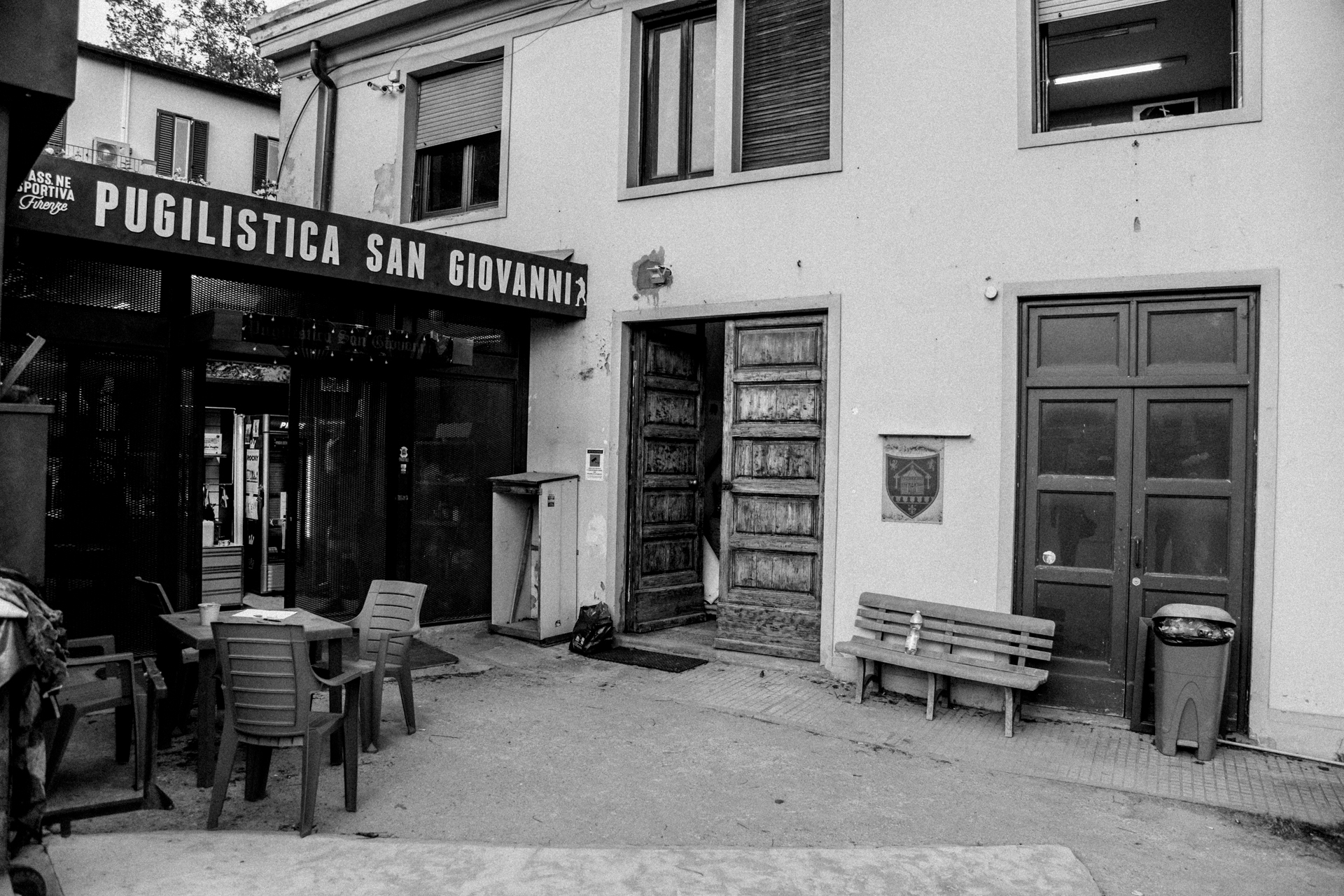
The Verdi di San Giovanni Team headquarters.
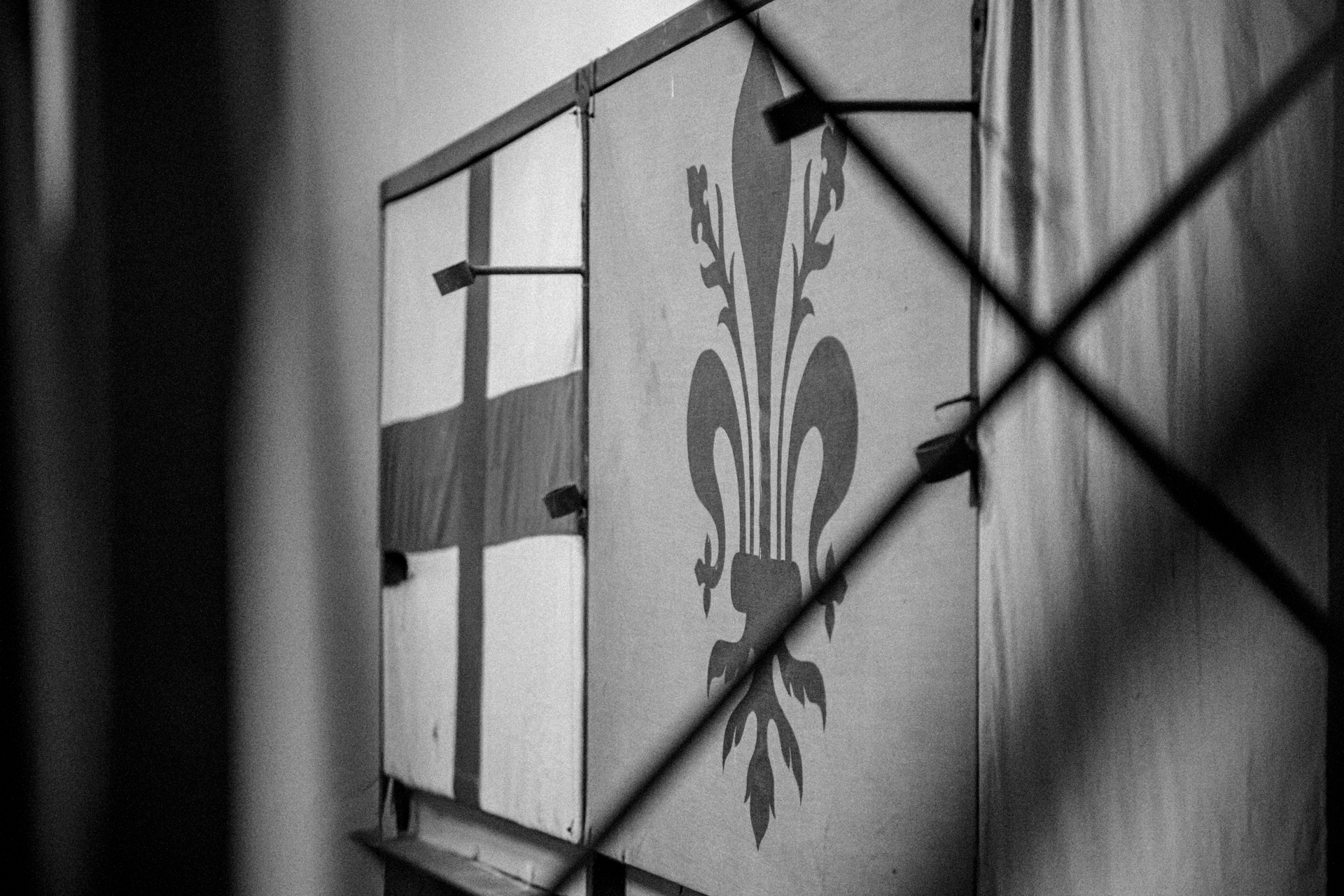
The flag with the coat of arms of Florence inside the Team headquarters.

Inside the Verdi Team headquarters.
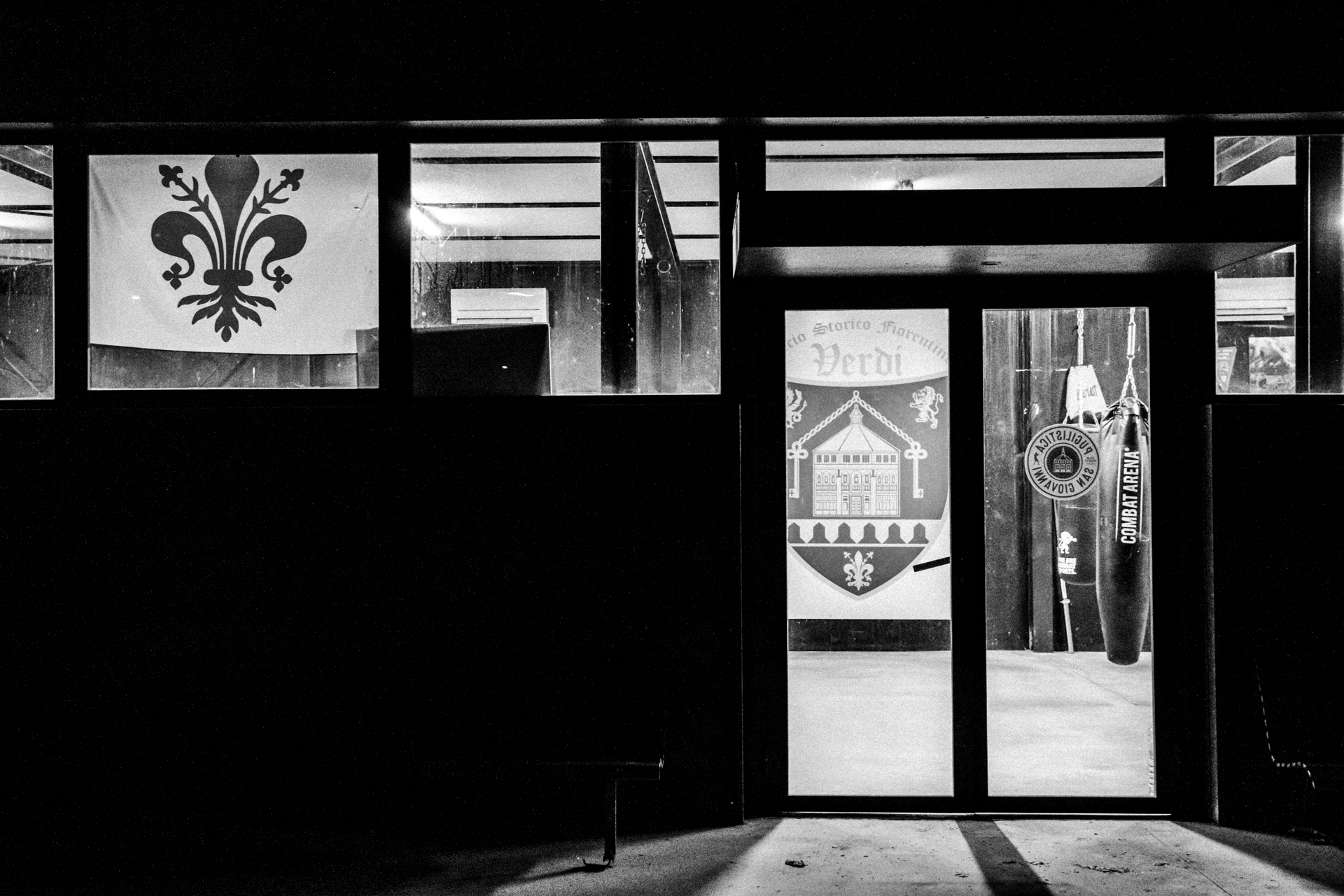
The Verdi Team boxing club. On the left, a flag depicting il giglio (the lily), the coat of arms of Florence. On the wall in the background, the flag with the Verdi Team coat of arms.

The ring inside the Verdi Team boxing club.
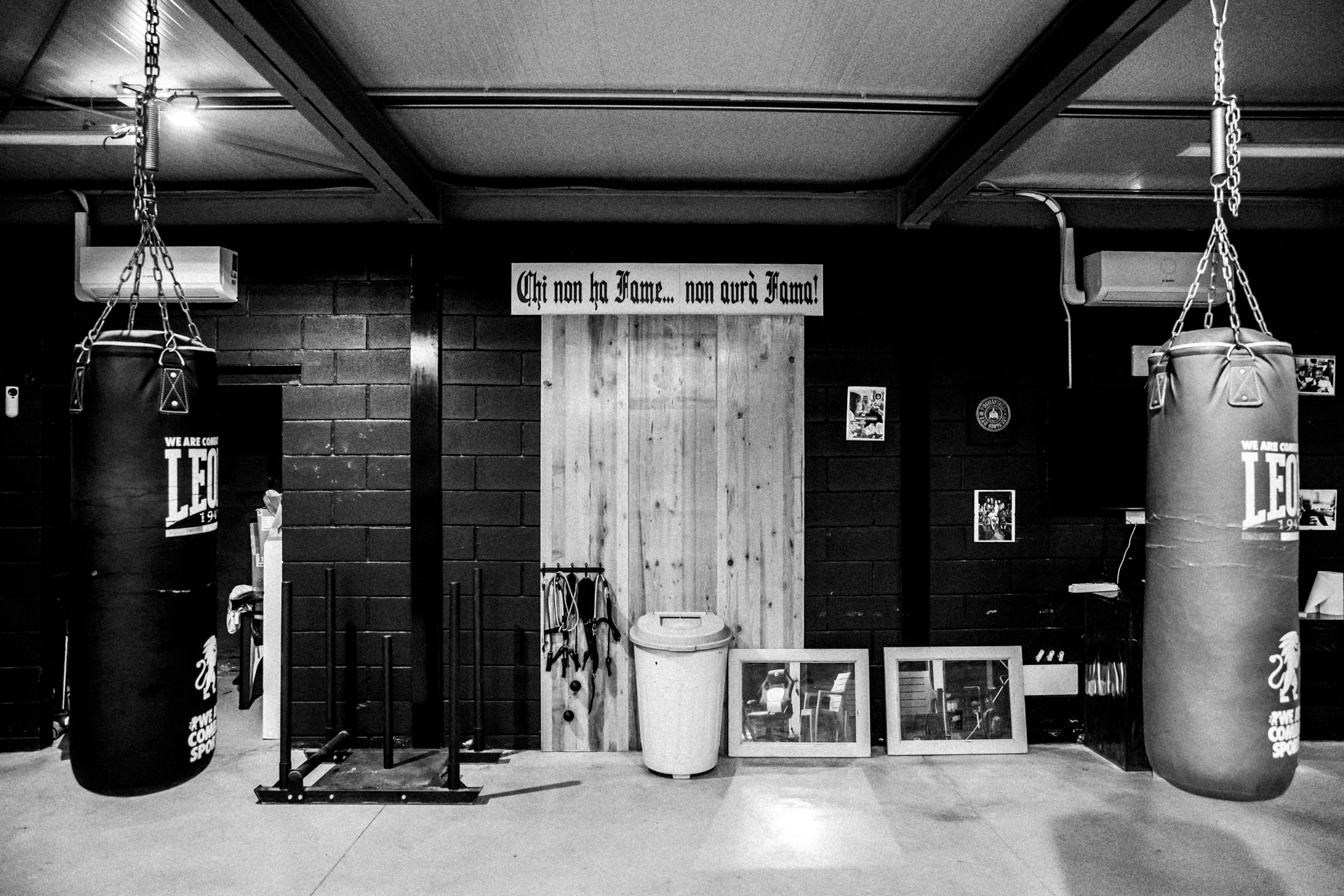
The boxing club where Verdi Team trains. In the background, a sign reads: “He who is not hungry, will not have fame“.
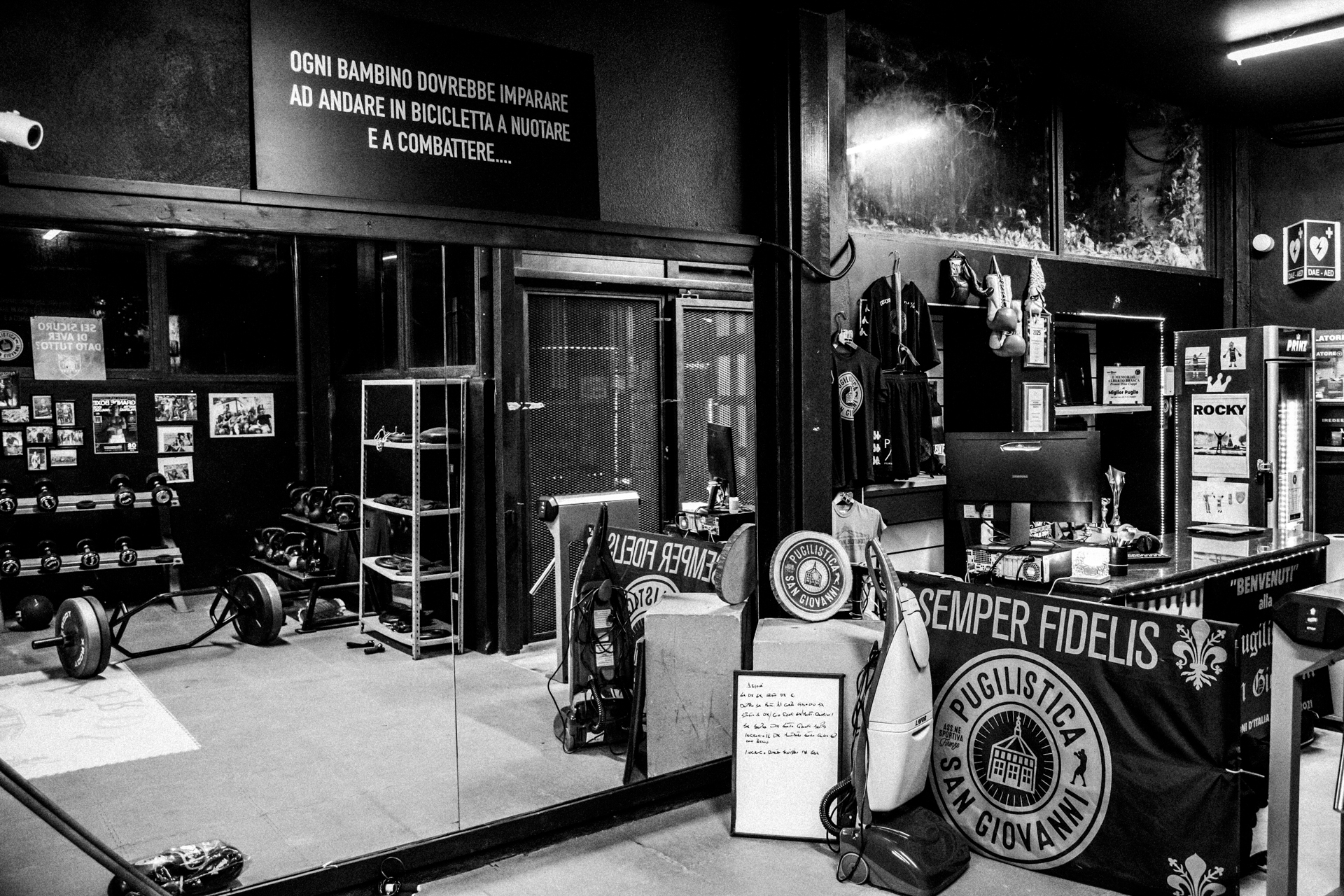
The entrance to the boxing gym, with a sign that reads: “Every child should learn to ride a bike, swim and fight“.
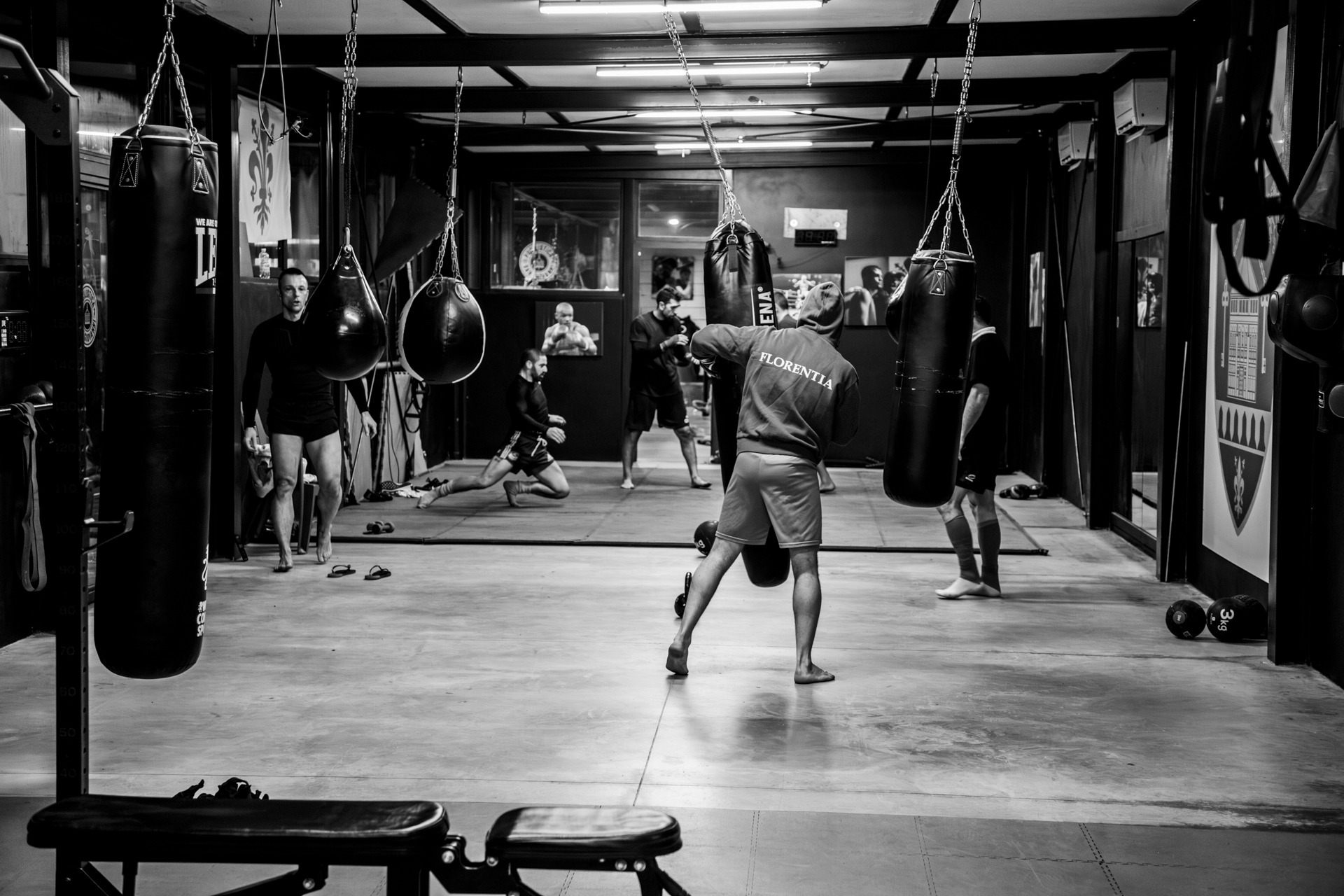
A group of calcianti, as the players of the Florentine Calcio Storico teams are called, training inside the gym. One of them is wearing a sweatshirt with Florentia written on it. Florentia, the Latin name for Florence, is an auspicious name that means: “May you be prosperous“, “City of prosperity“.
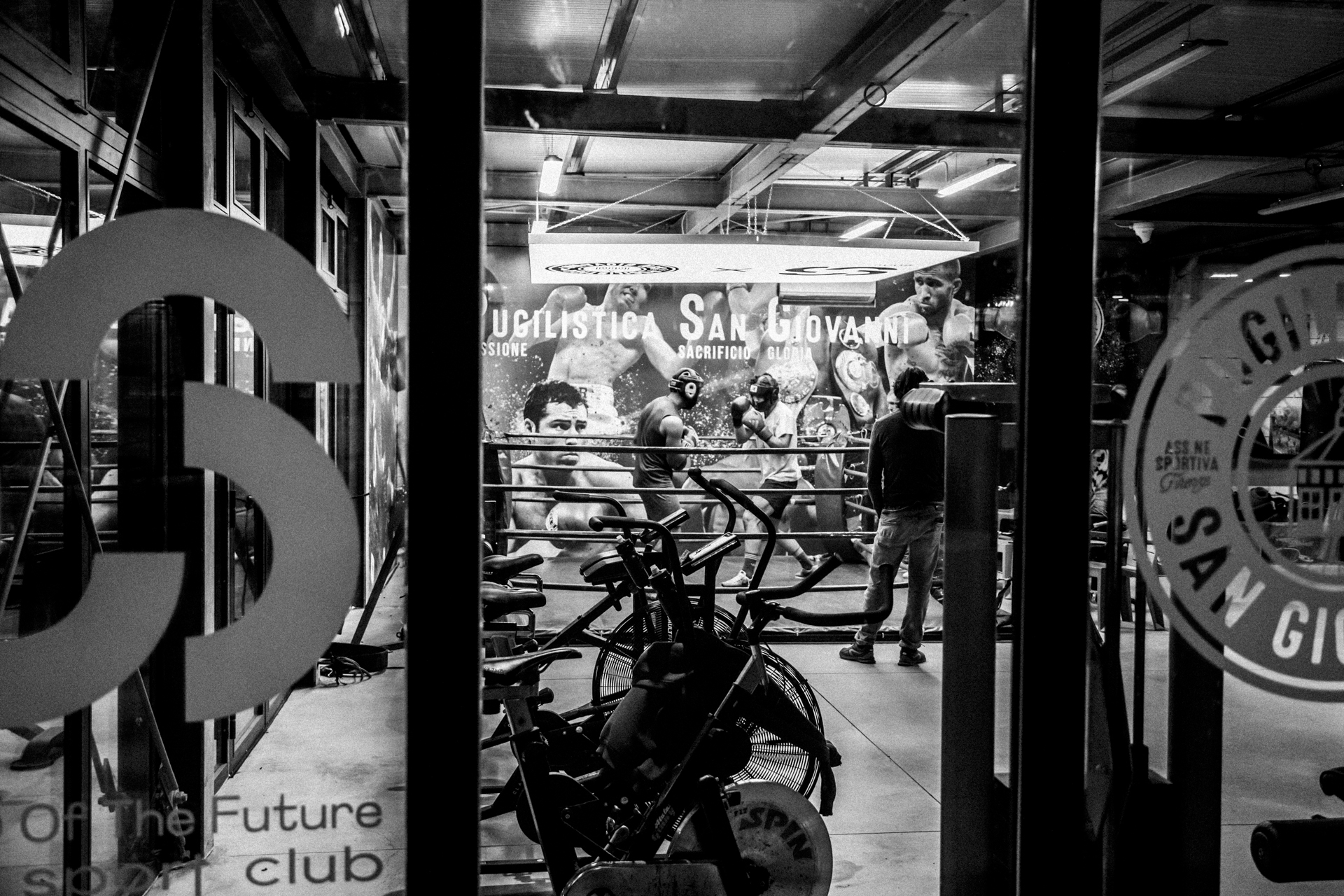
Two calcianti sparring in front of one of the coaches.
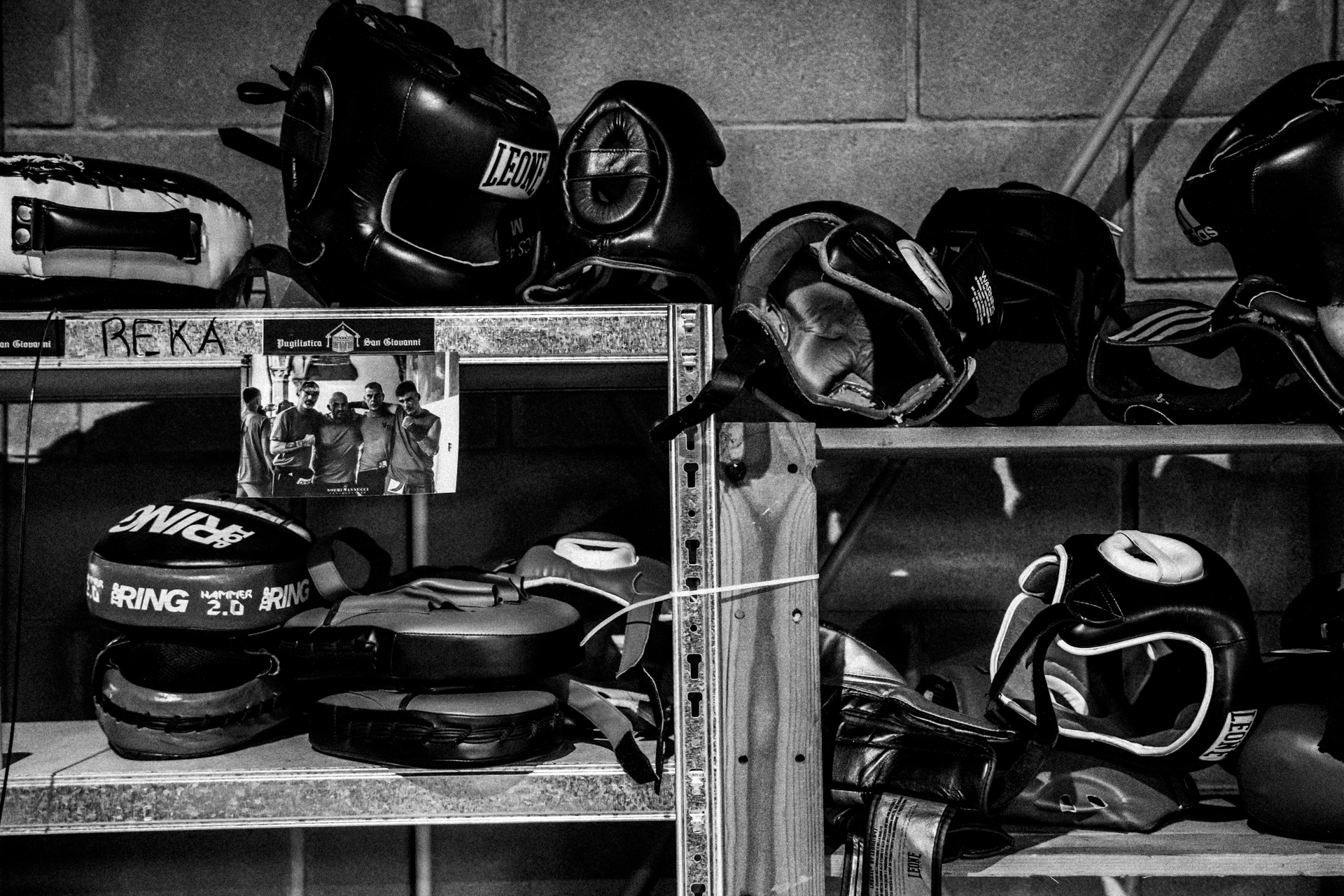
Helmets and pads on a shelf in the Verdi Team boxing club.
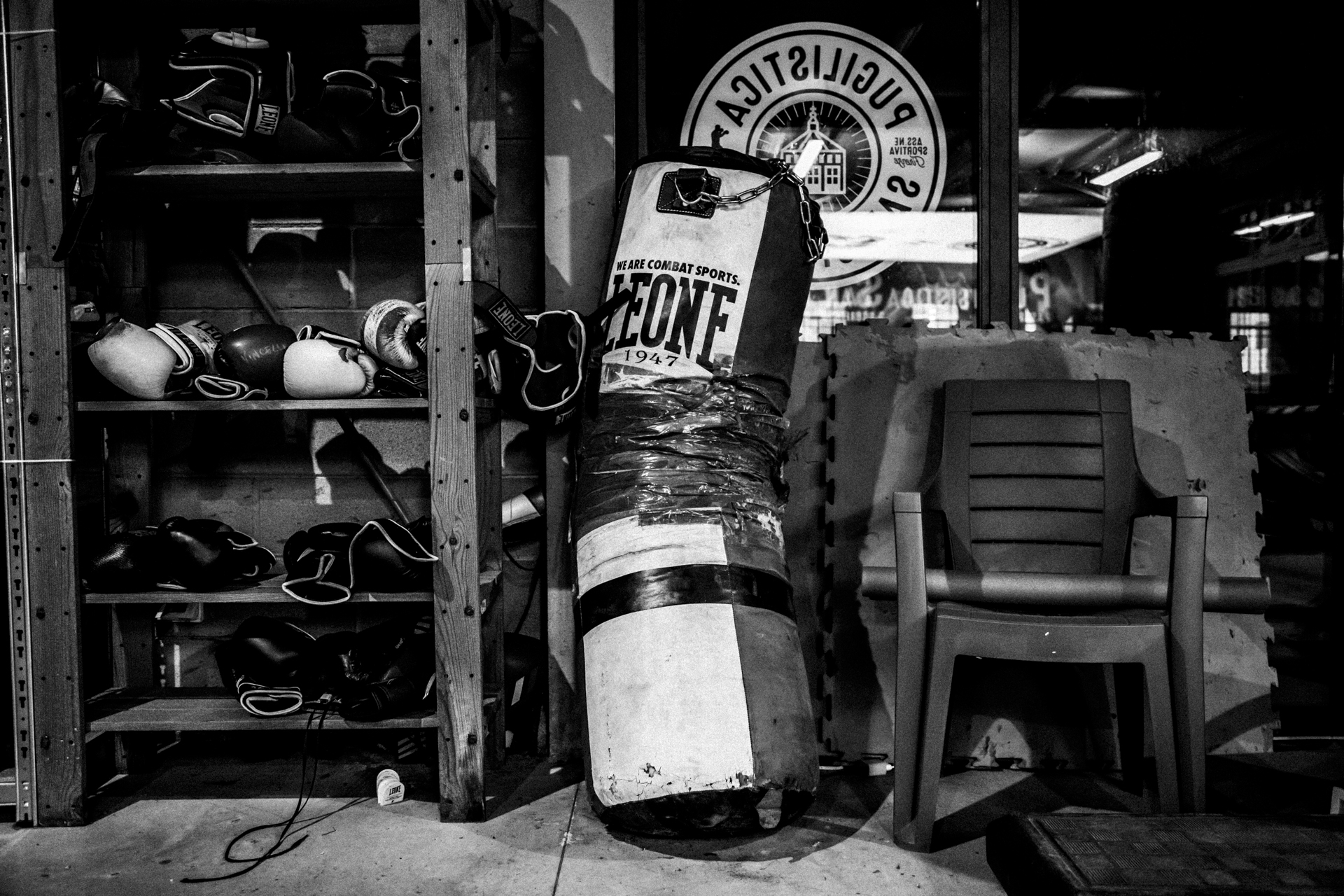
Inside the Verdi Team boxing club.
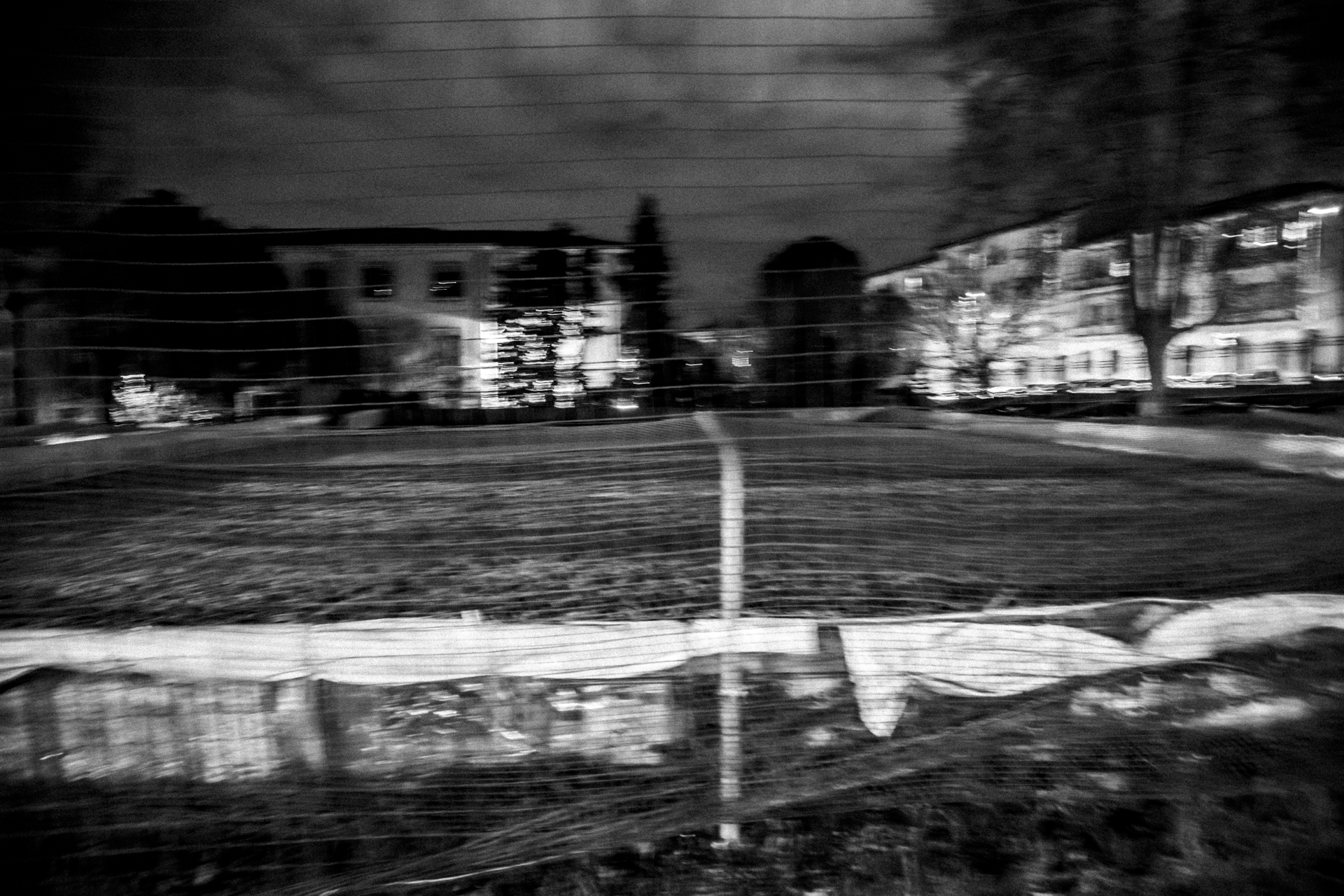
The Team’s management decided to cancel a training session and call a meeting that all team members are required to attend.
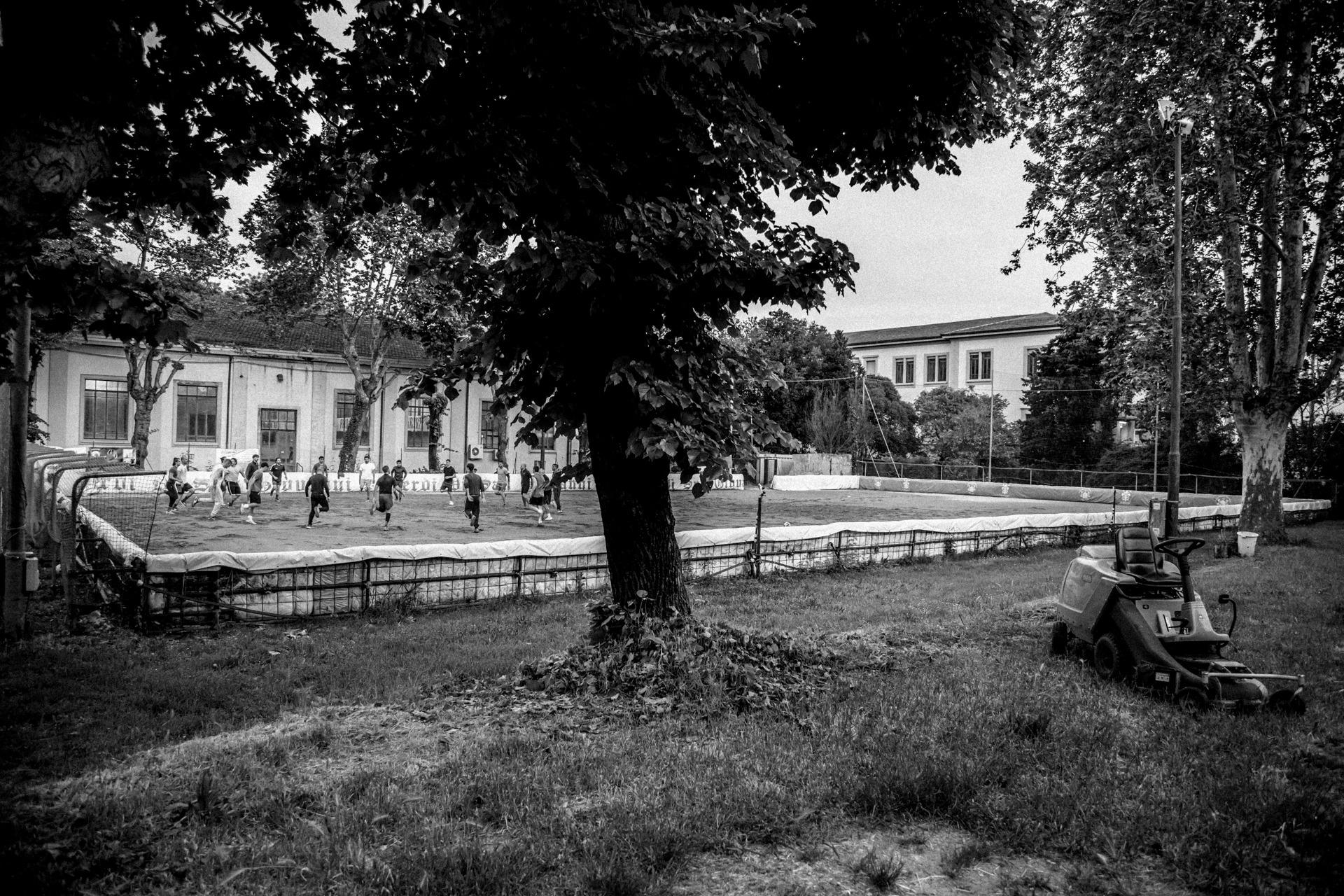
Verdi Team members warming up. The square is covered in dirt as a way to recreate the setting from years past.
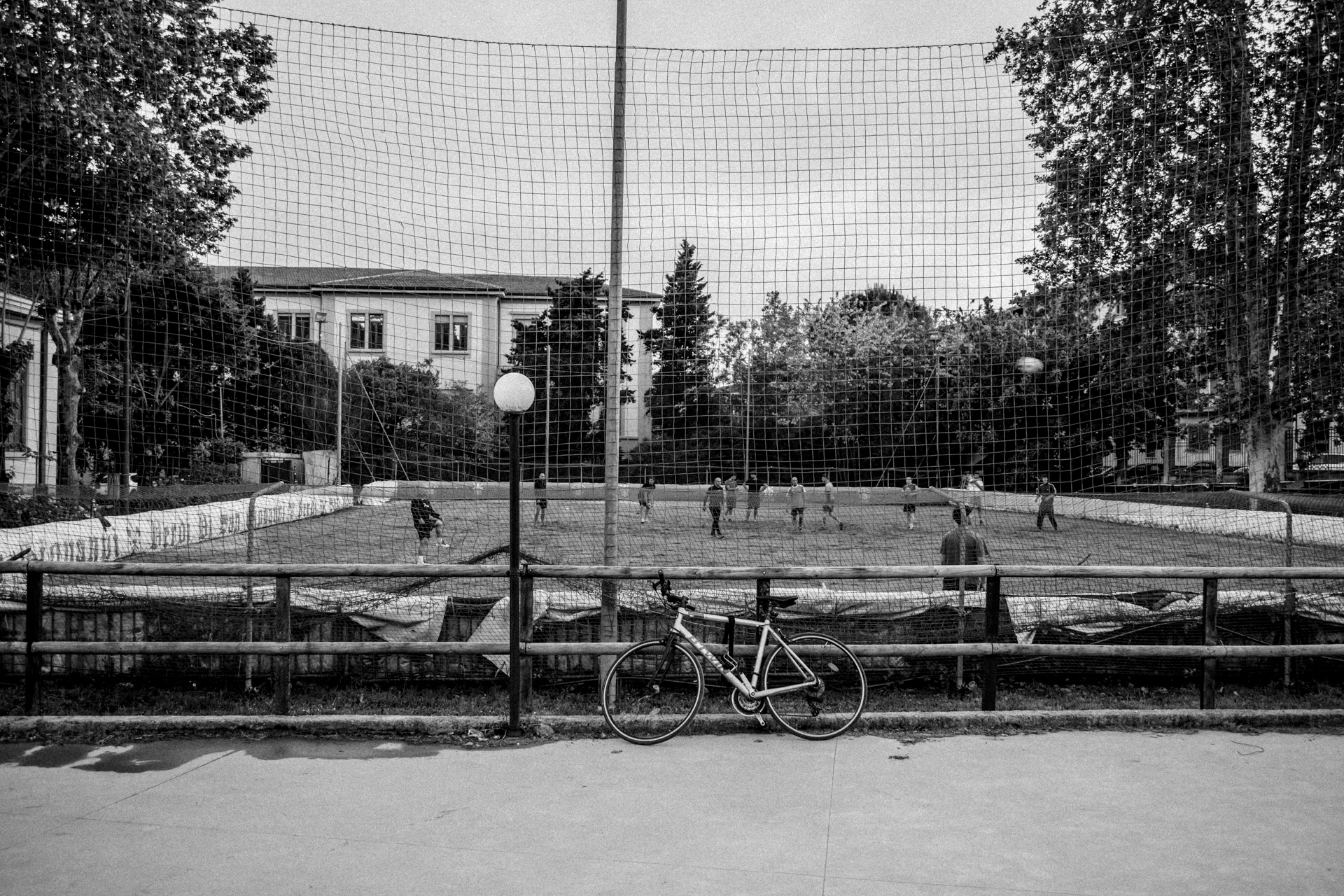
Team members warming up in the Verdi headquarters field.
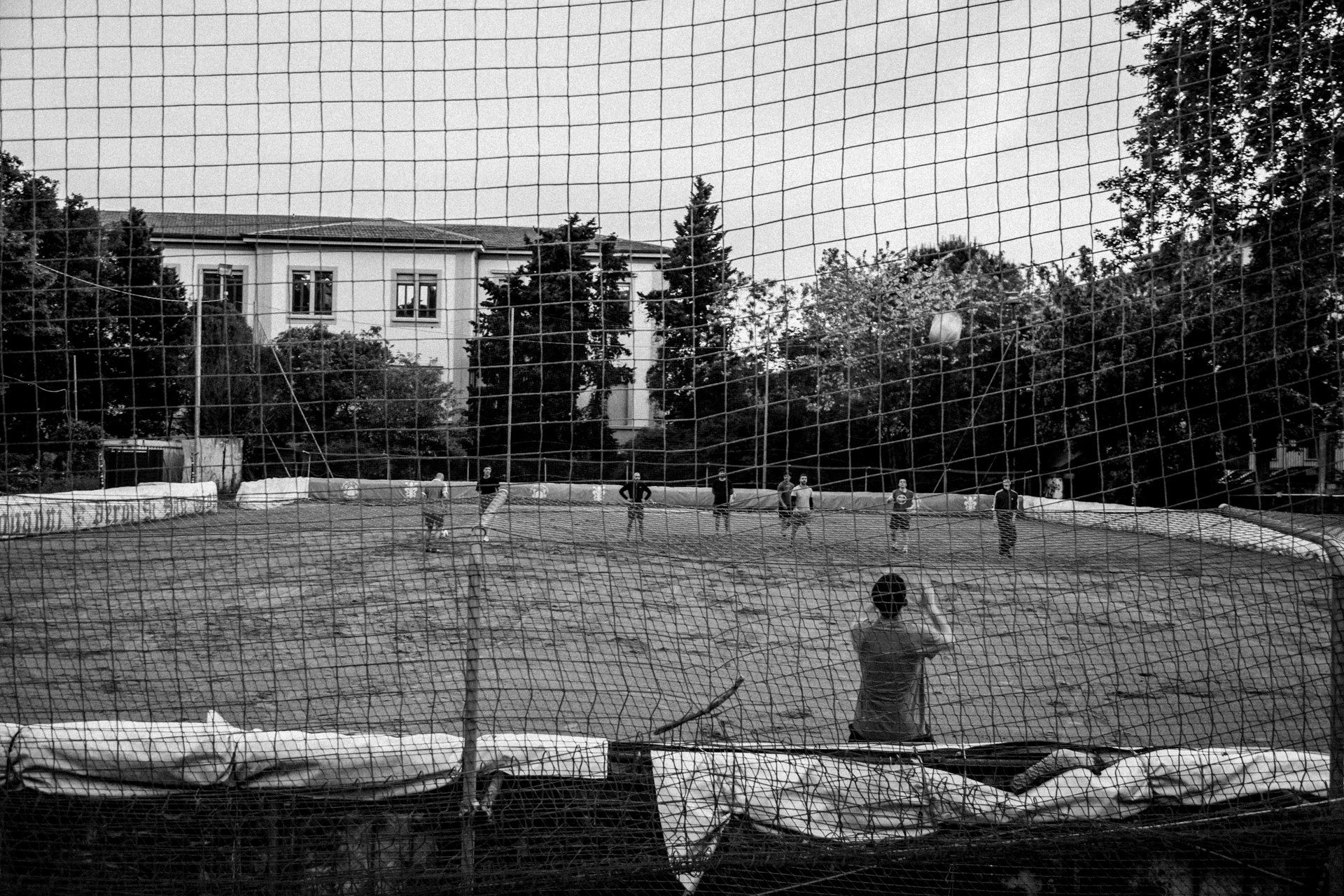
One of the goalkeepers starts training. Soccer team consists of four goalkeepers during a Calcio Storico game.

The Team starts training in the field. Verdi di San Giovanni: the name of the team, with the reference district of the city.
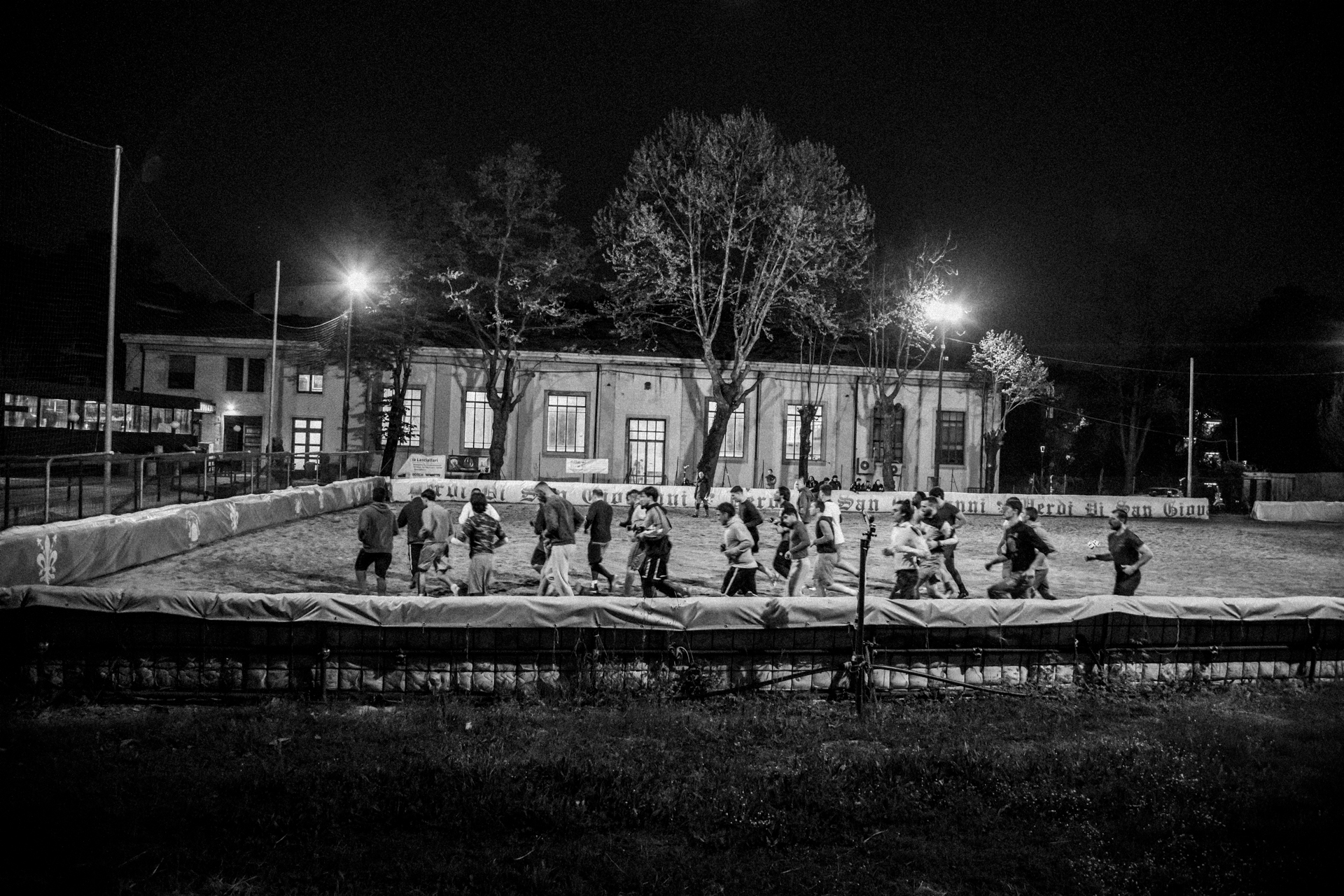
Team training.
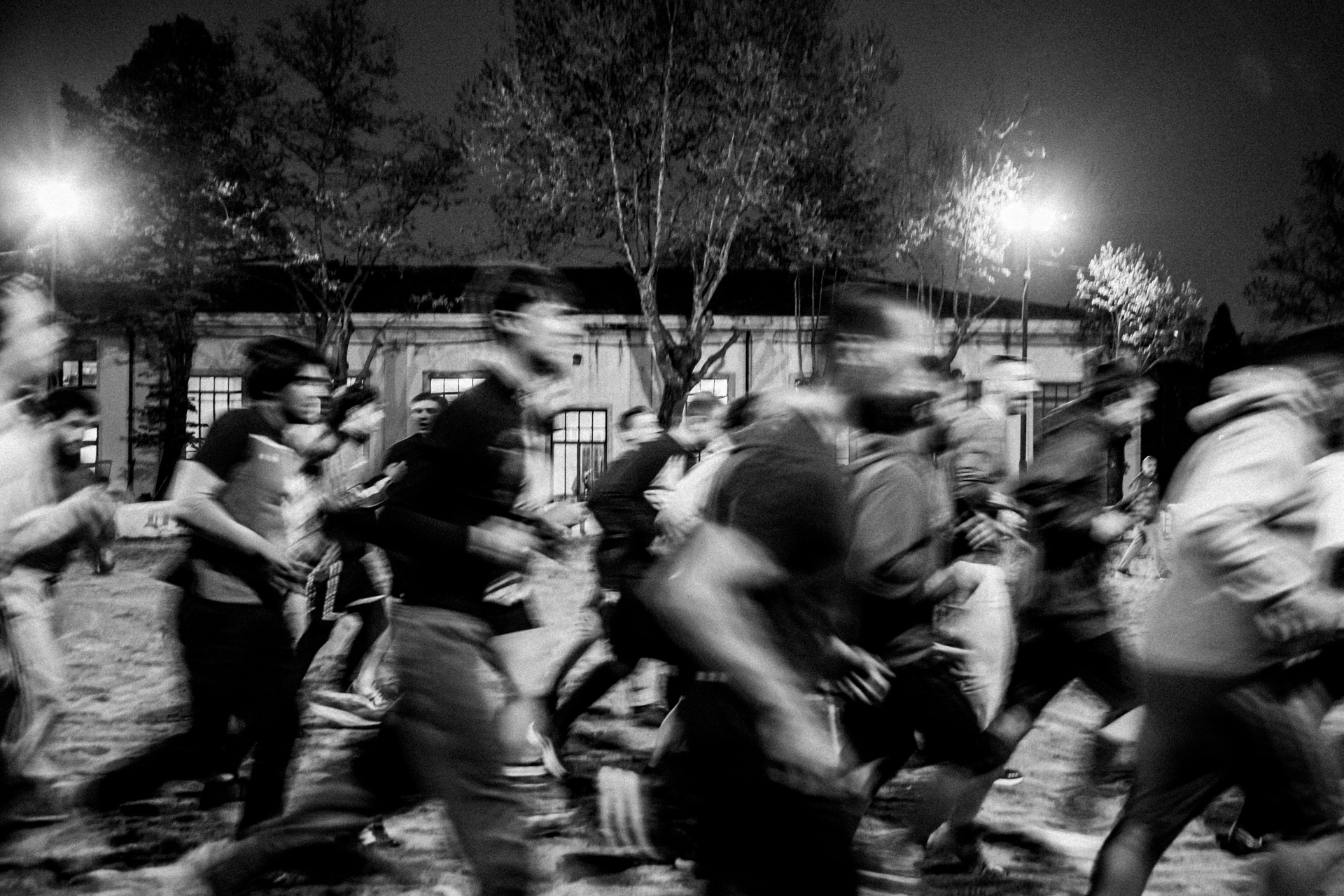
Team training.
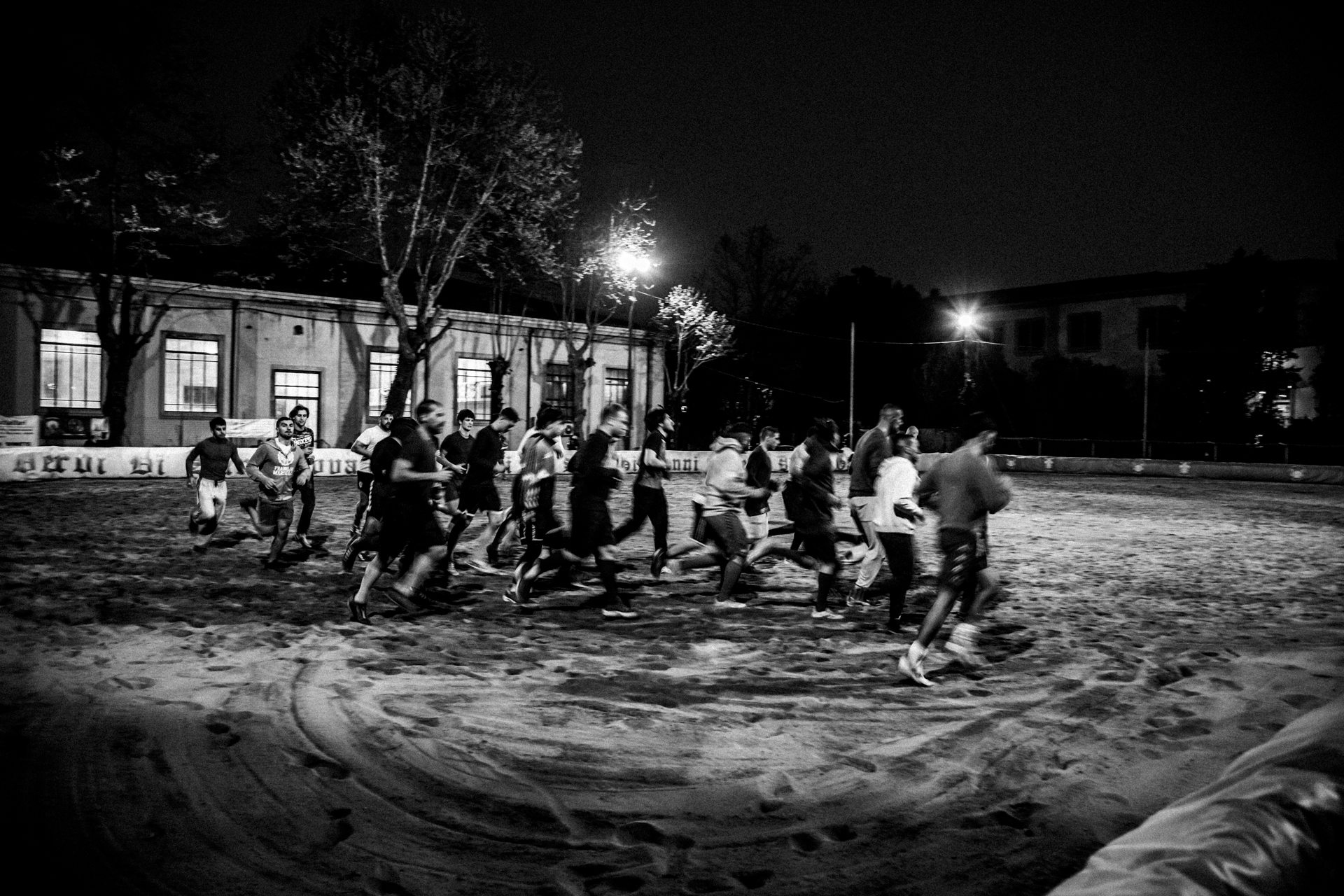
Team training.
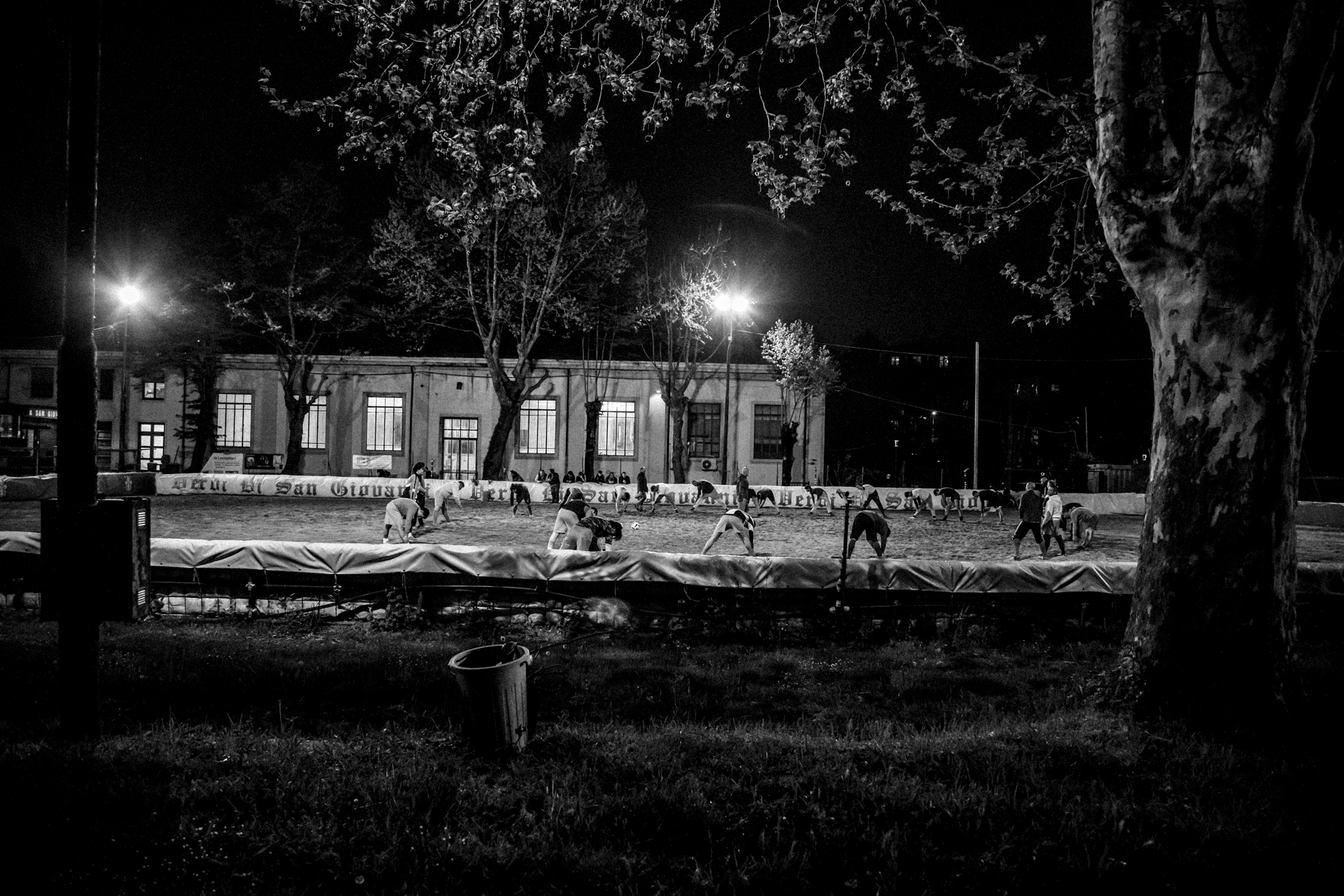
Team training.
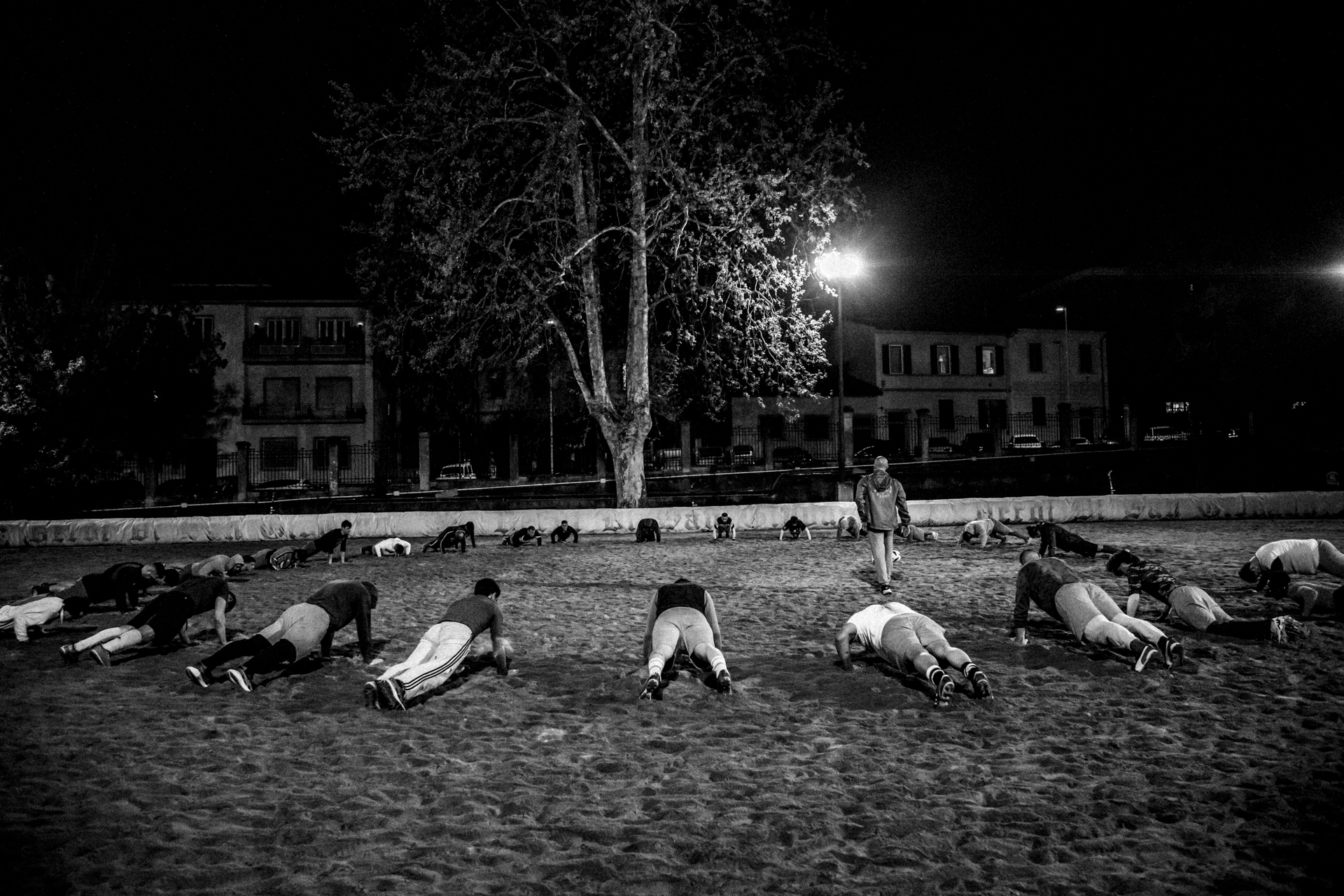
The Team starting the boxing training.
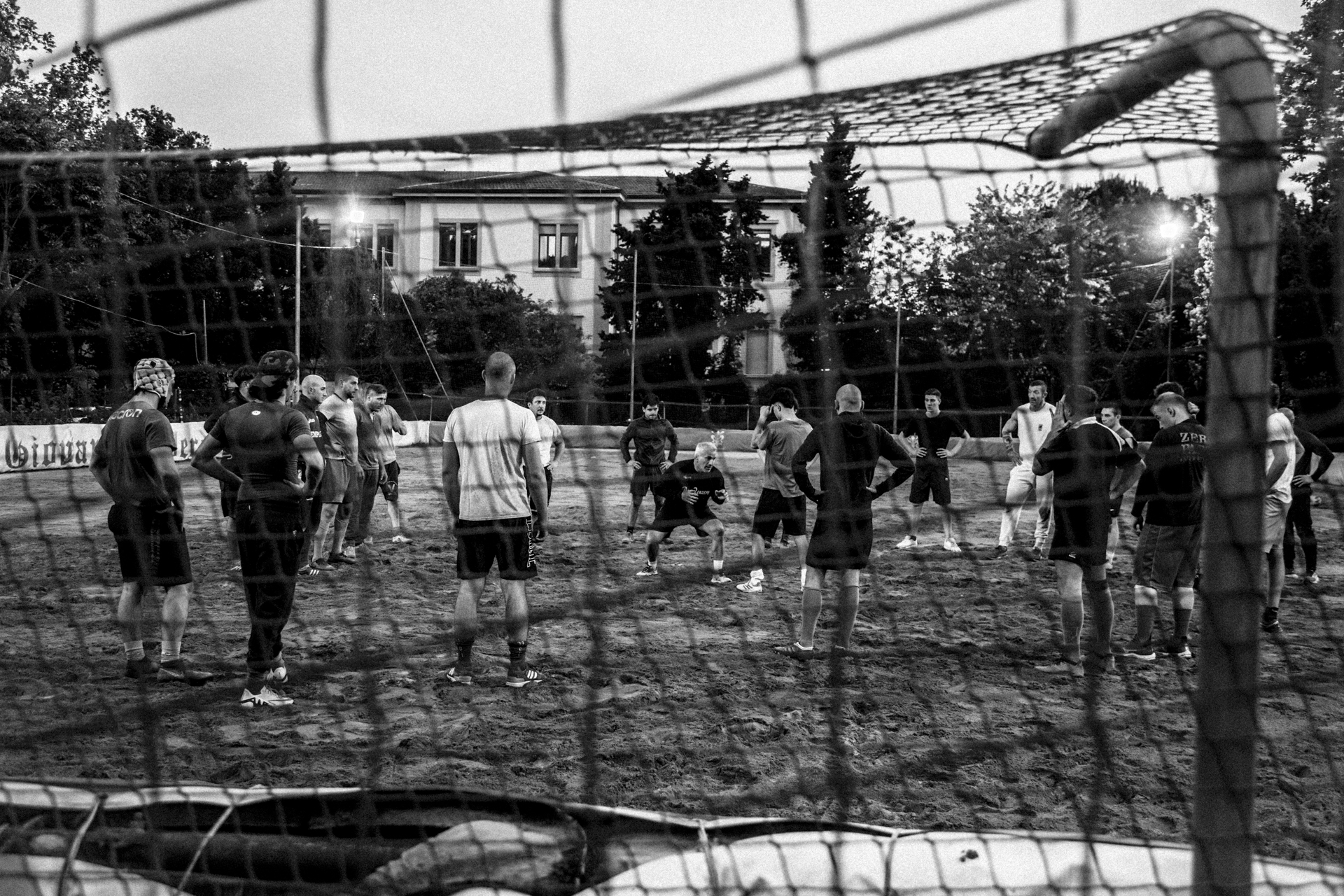
The wrestling coach teaching techniques to the team. One day a week, the training is dedicated to wrestling.

Team members warming up running, while some other in the background are listening to the wrestling coach.
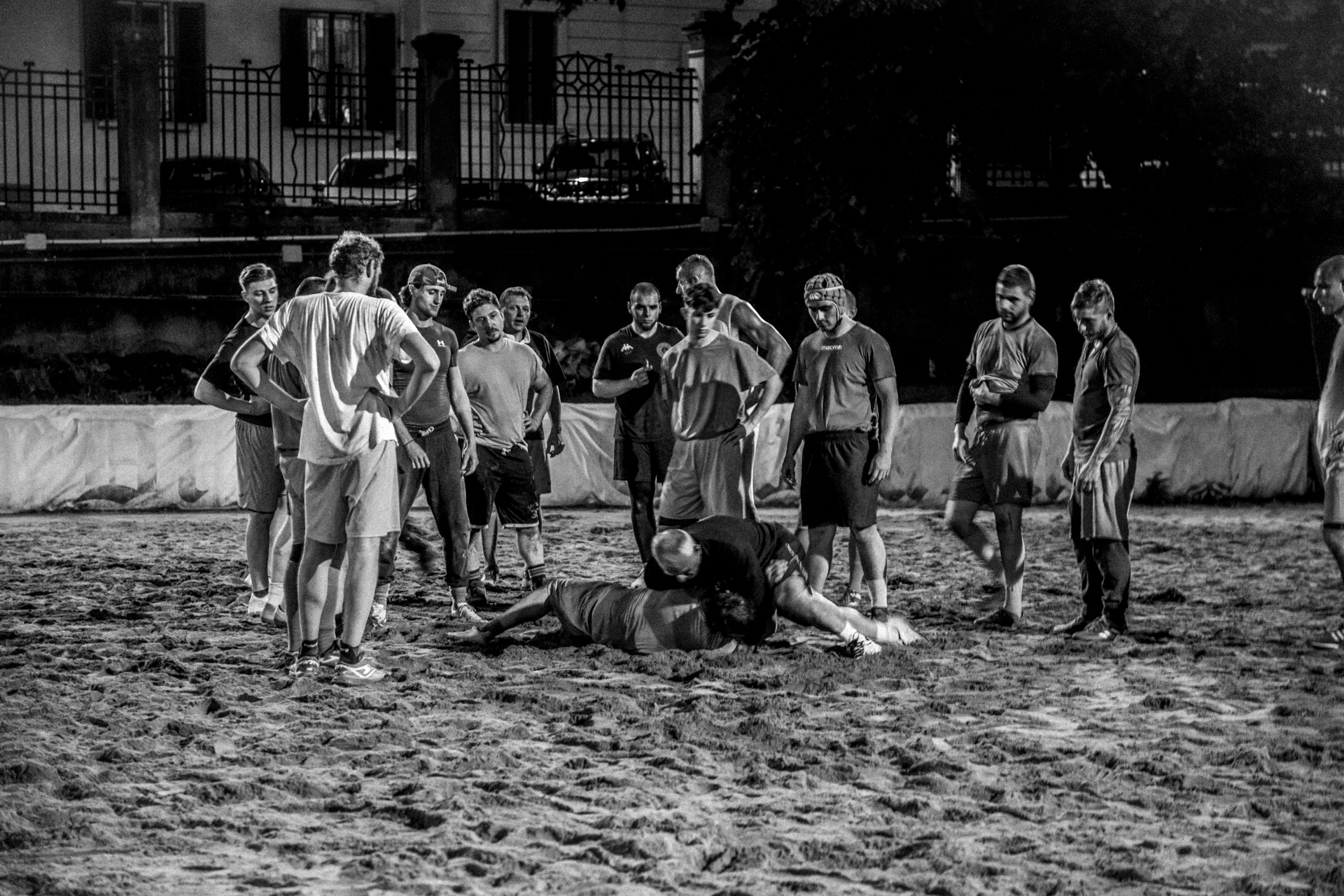
The wrestling coach explaining a technique.
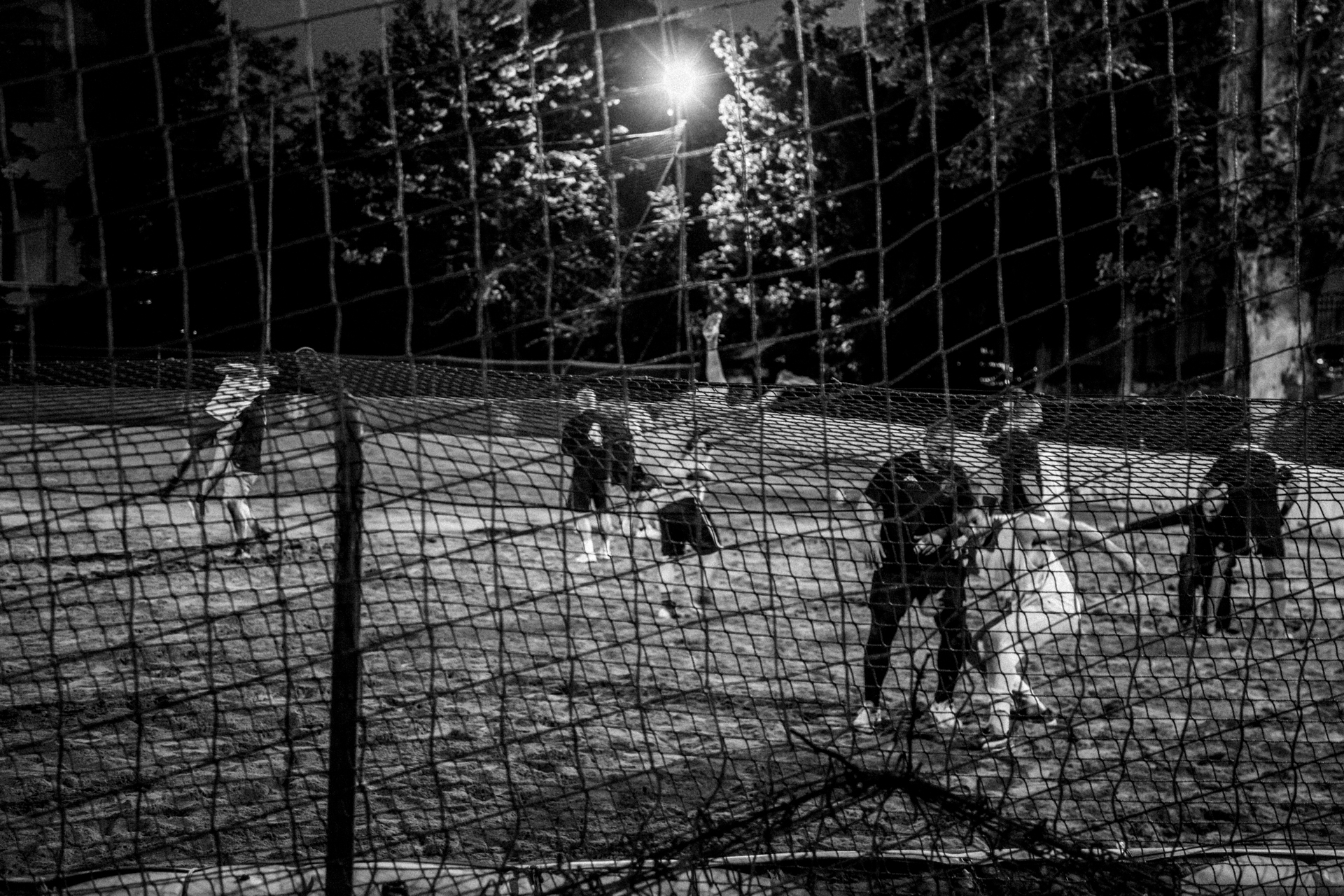
Team players practicing wrestling techniques.
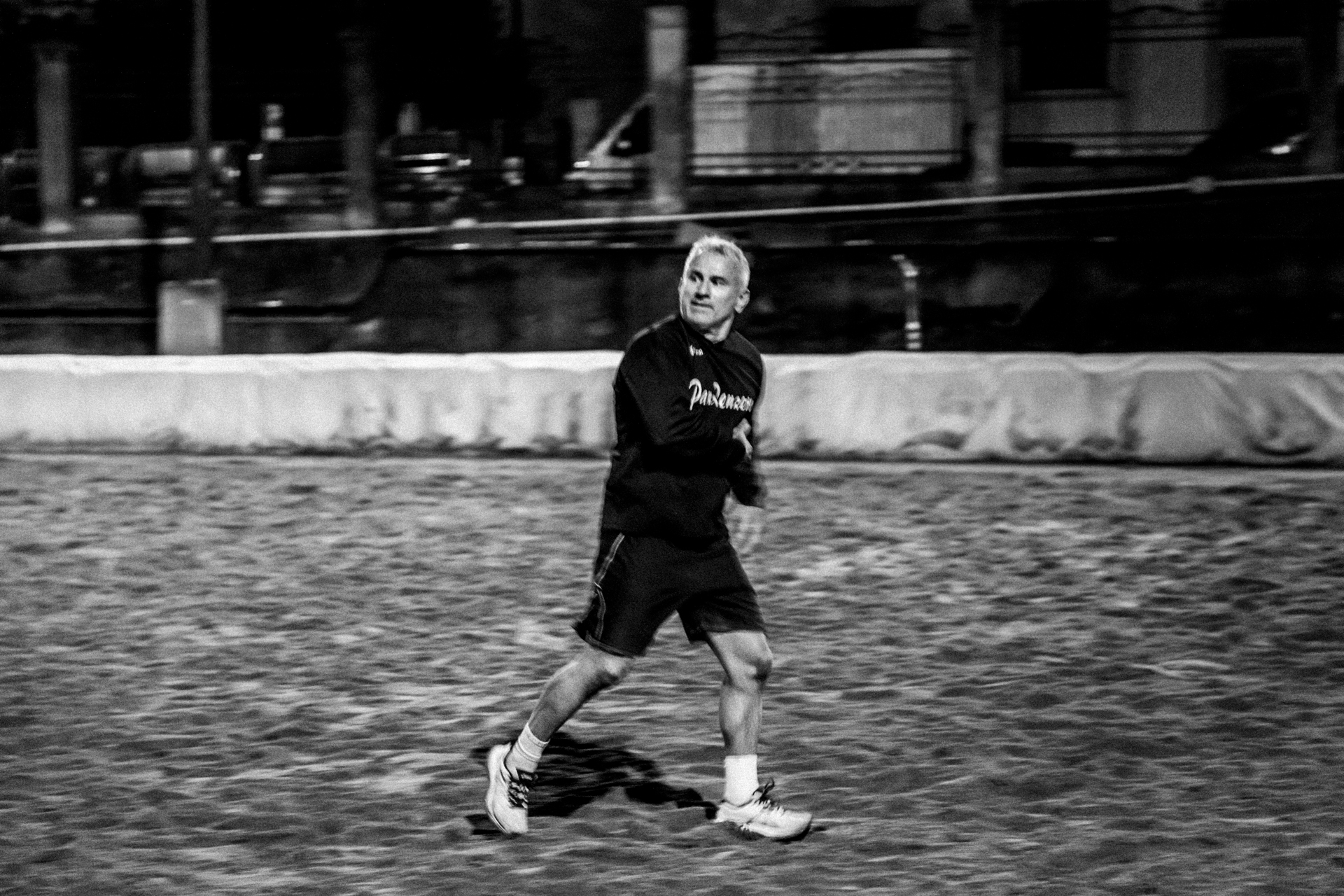
The wrestling coach leaving the field et the end of a wrestling session.
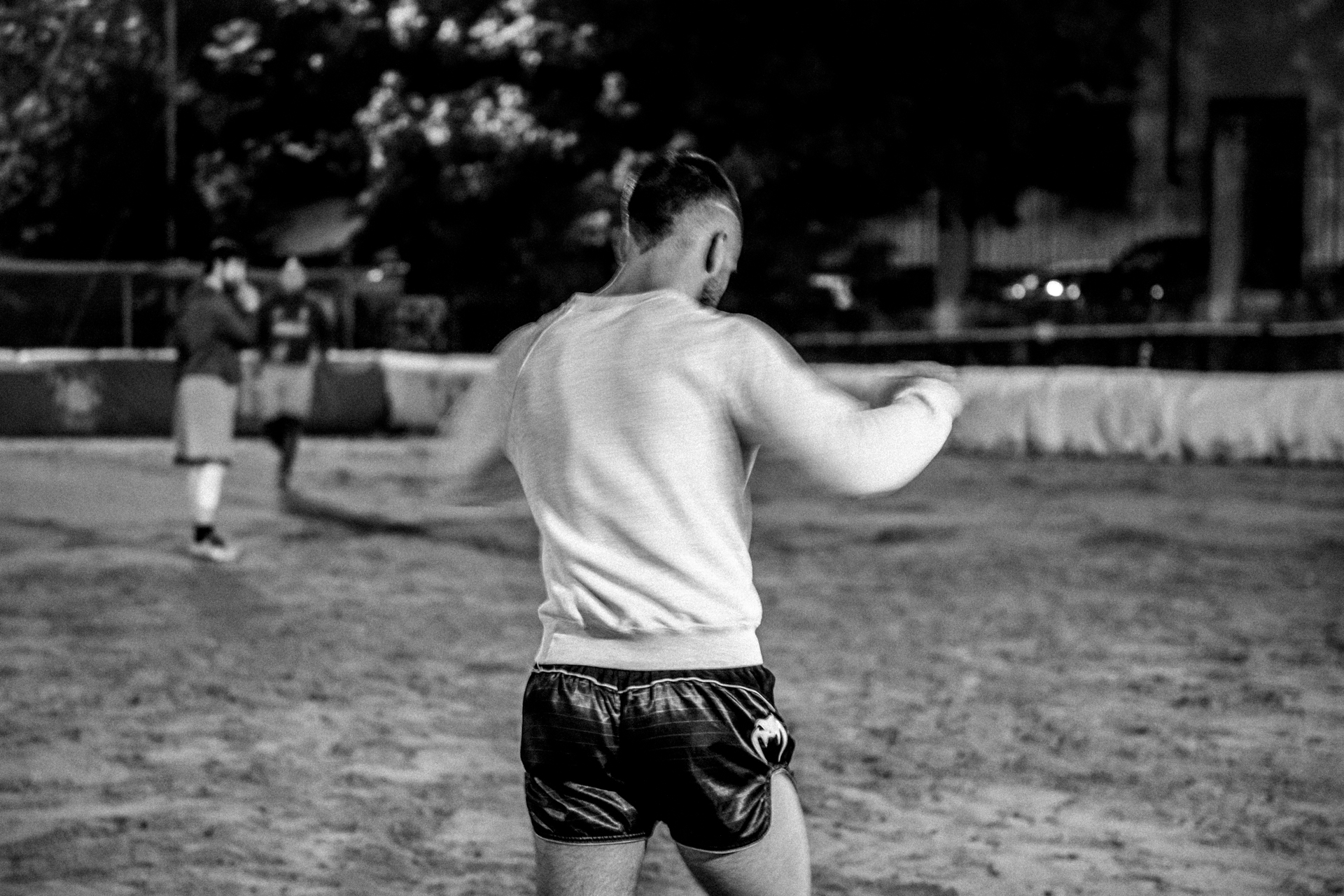
A Team player warming up.
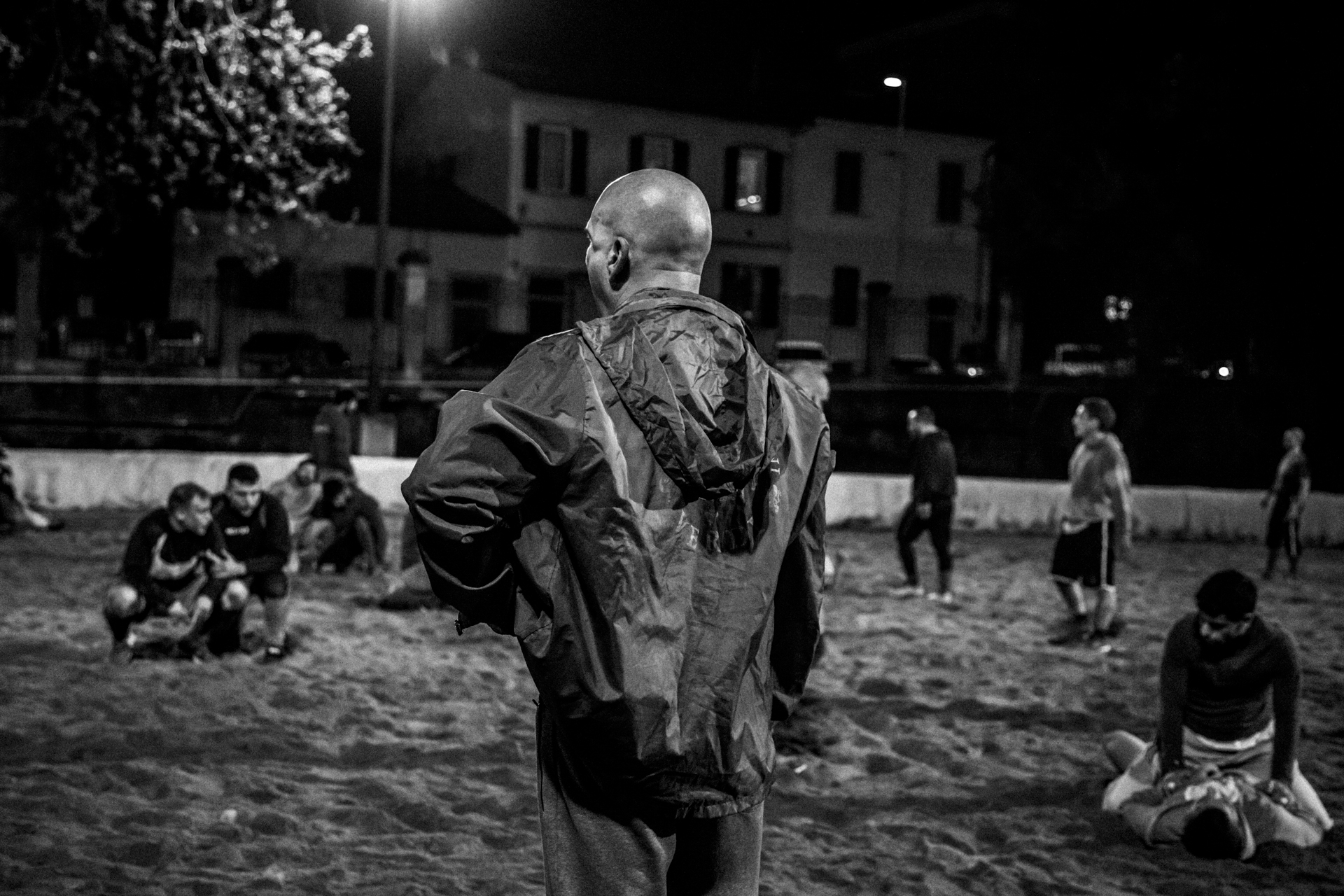
One of the coaches observes the team during a training game.
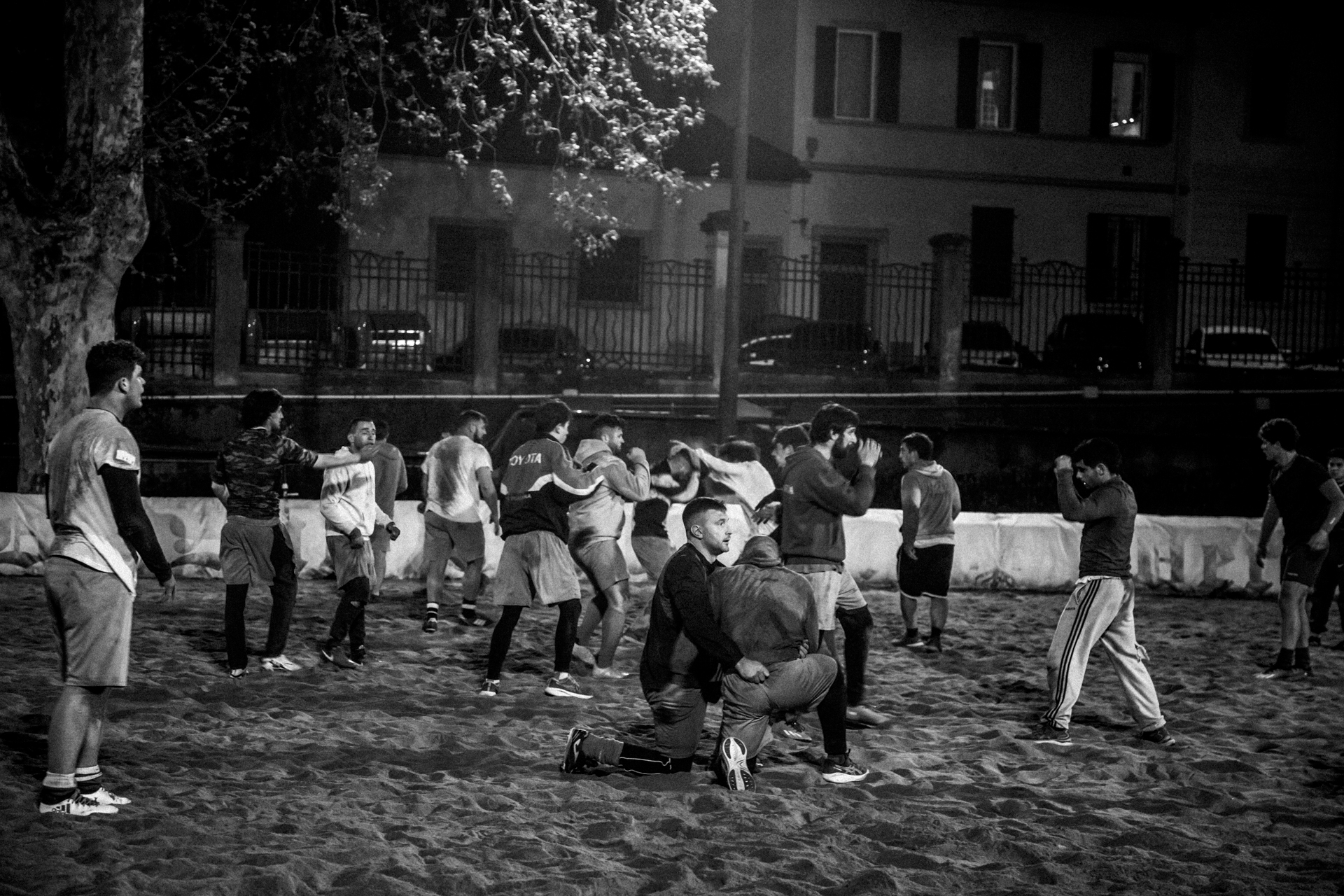
Calcio storico combines different sports, such as soccer, rugby, wrestling, boxing and martial arts.
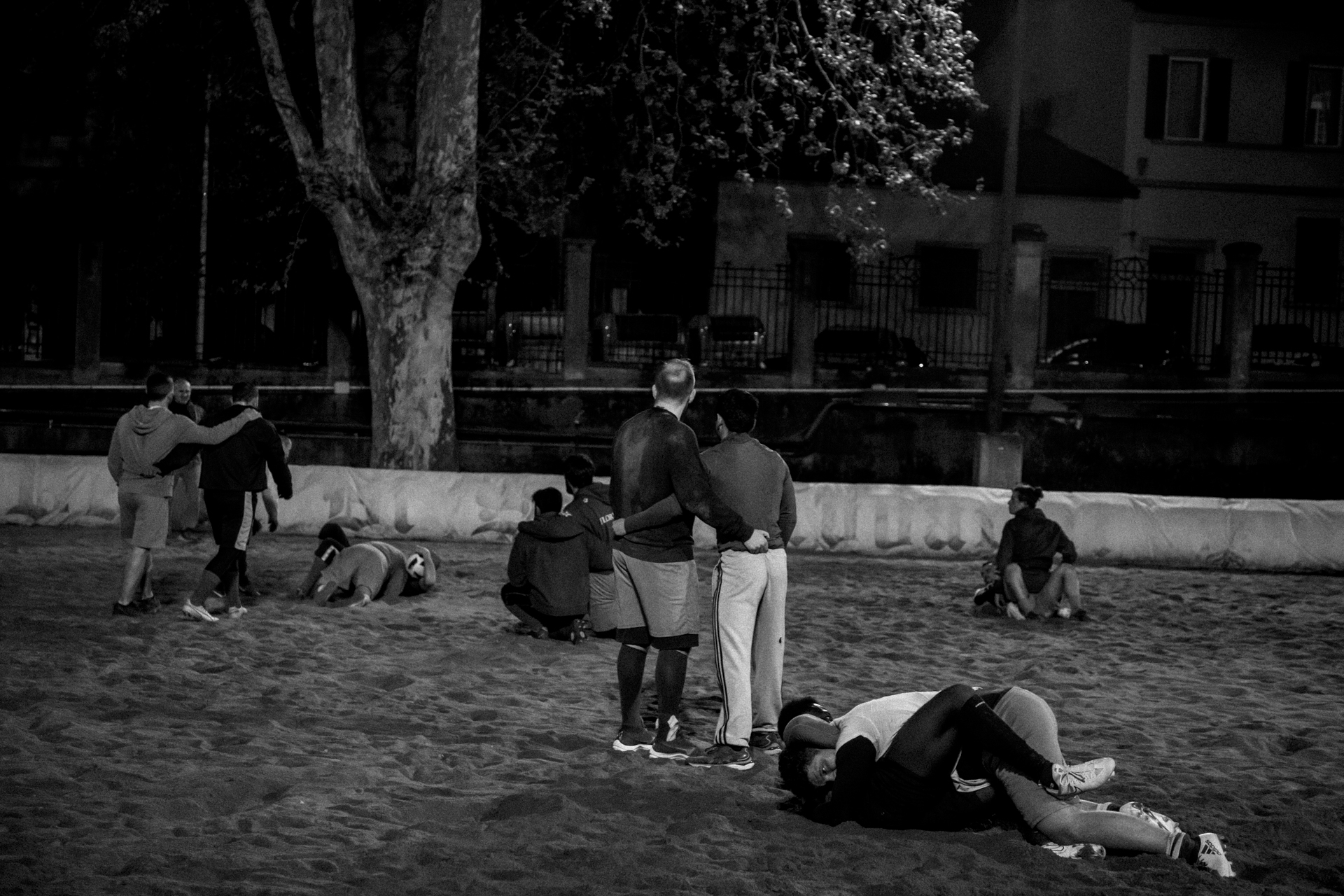
Team members during a training game.
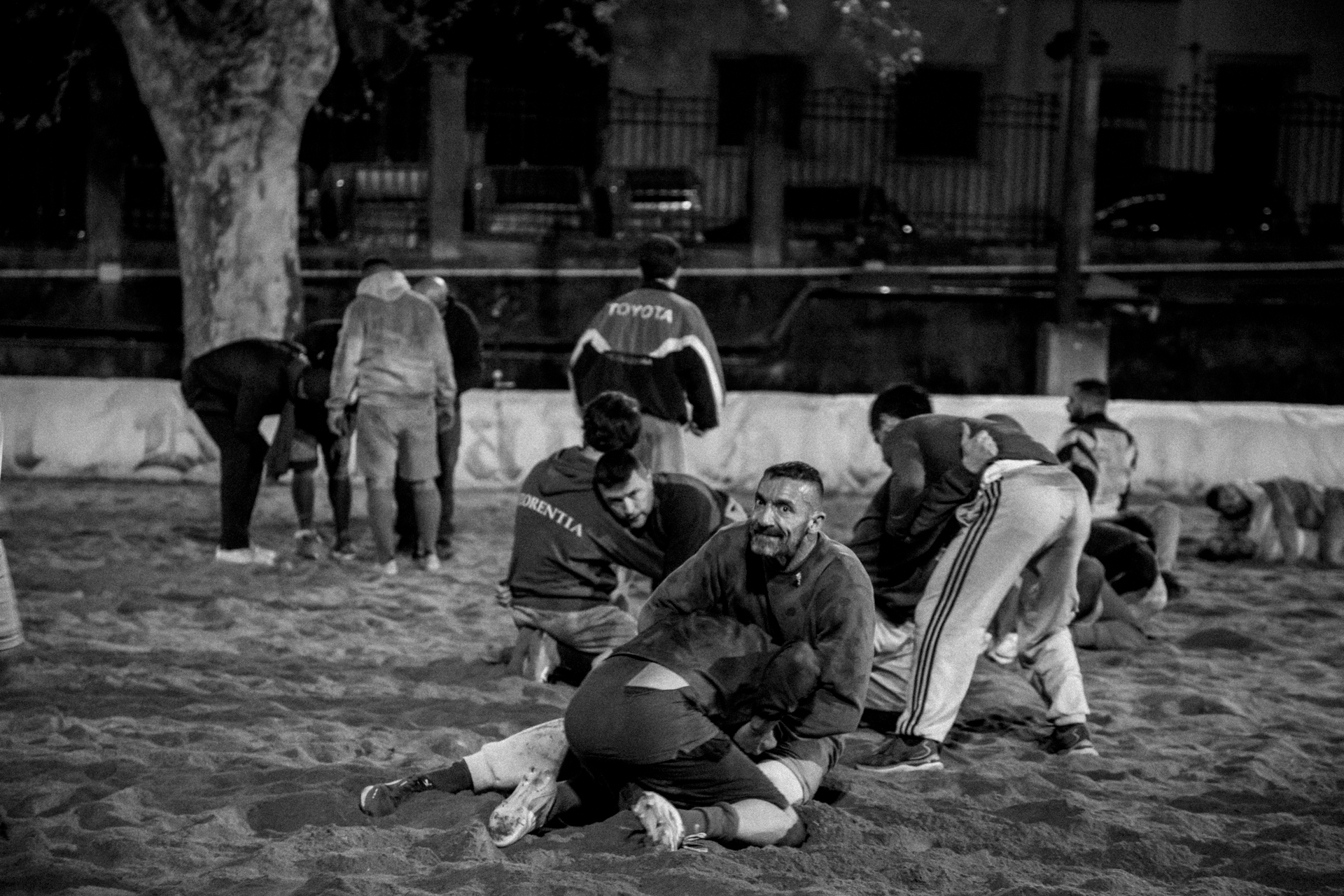
Wrestling is one of the most important disciplines every calciante must practice.
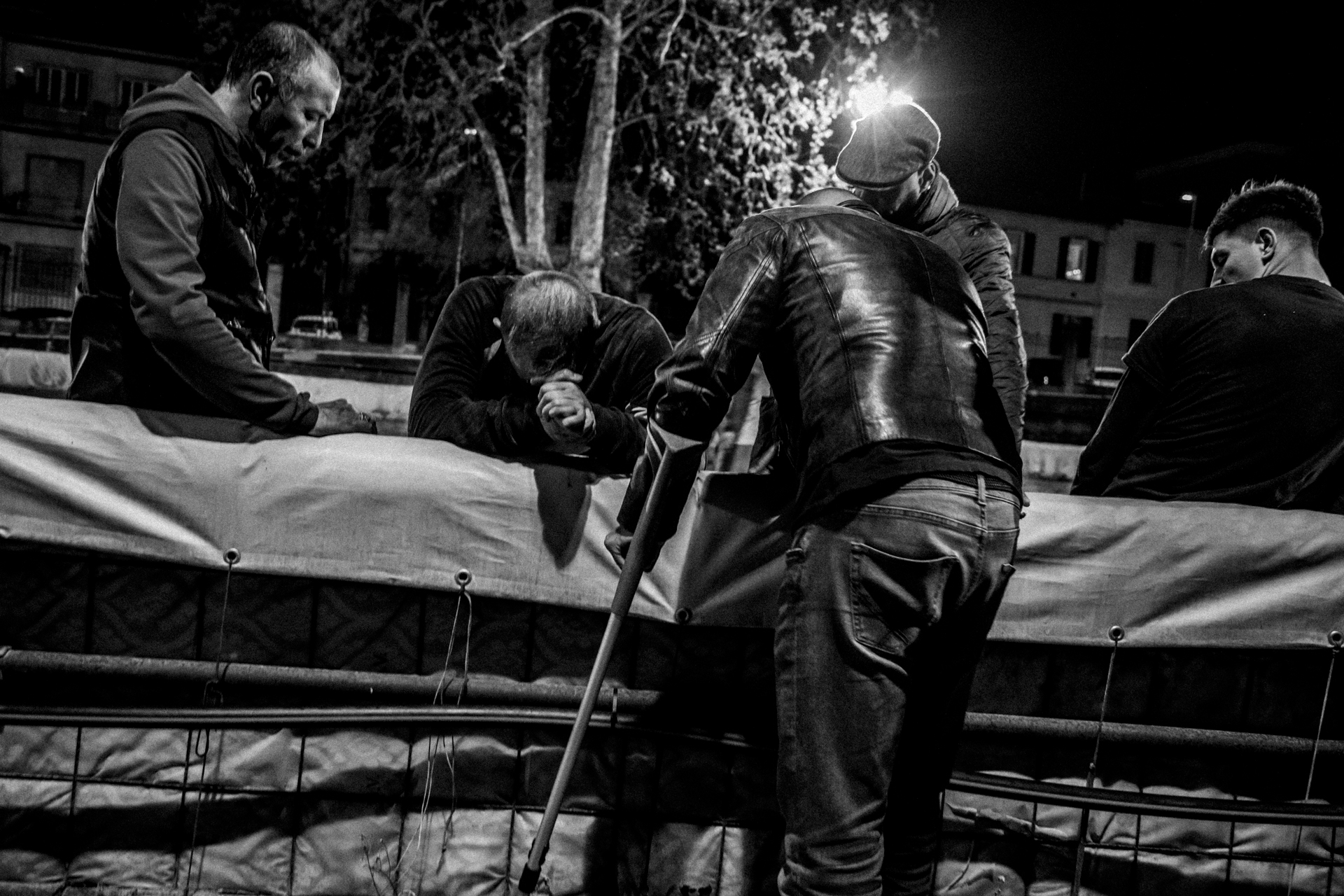
Team member Niccolò, on crutches due to an injury during a past training, inquires about the condition of another team member who has just been injured, stating: “Think I broke my kneecap“, before walking out and stopping.
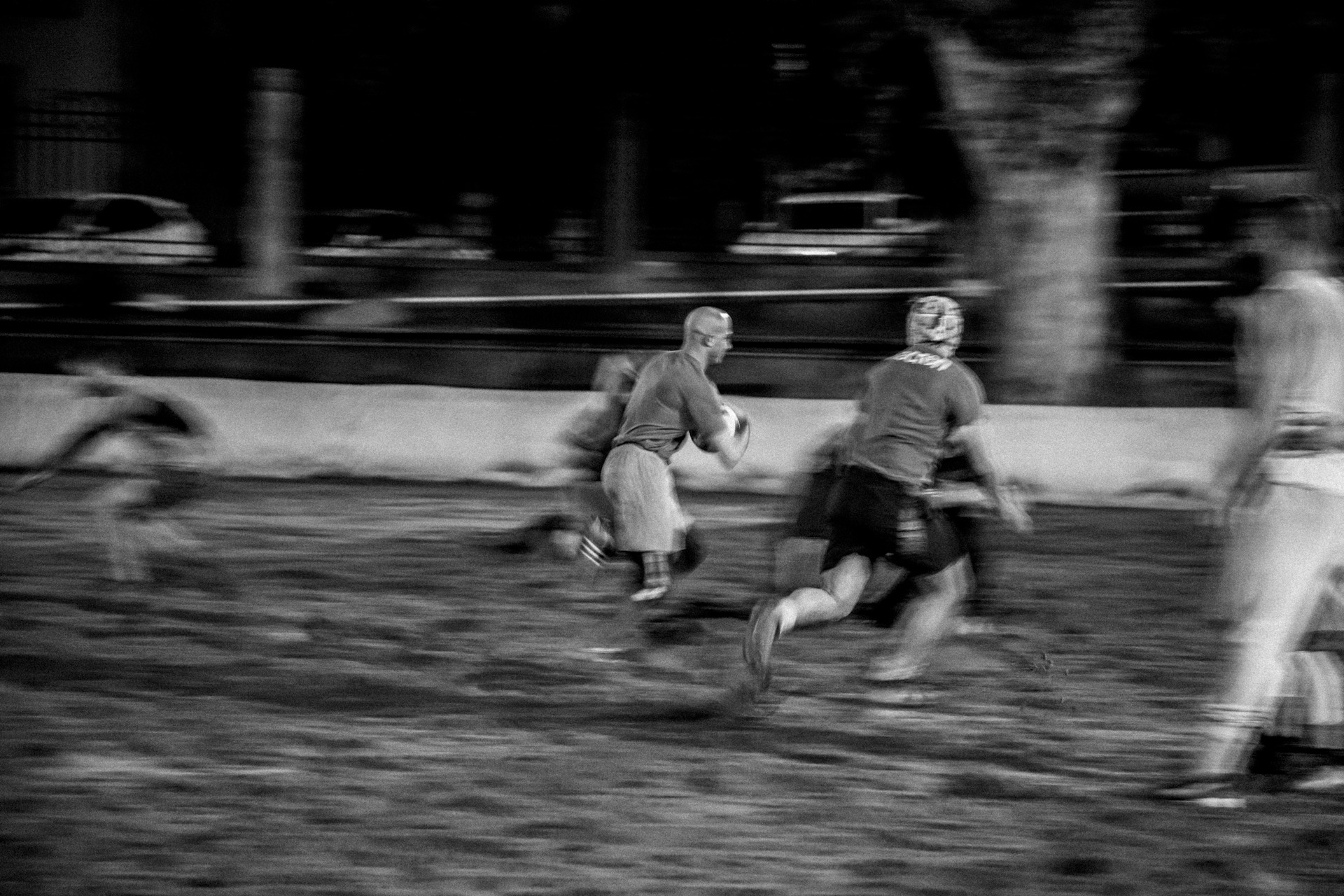
Training game.
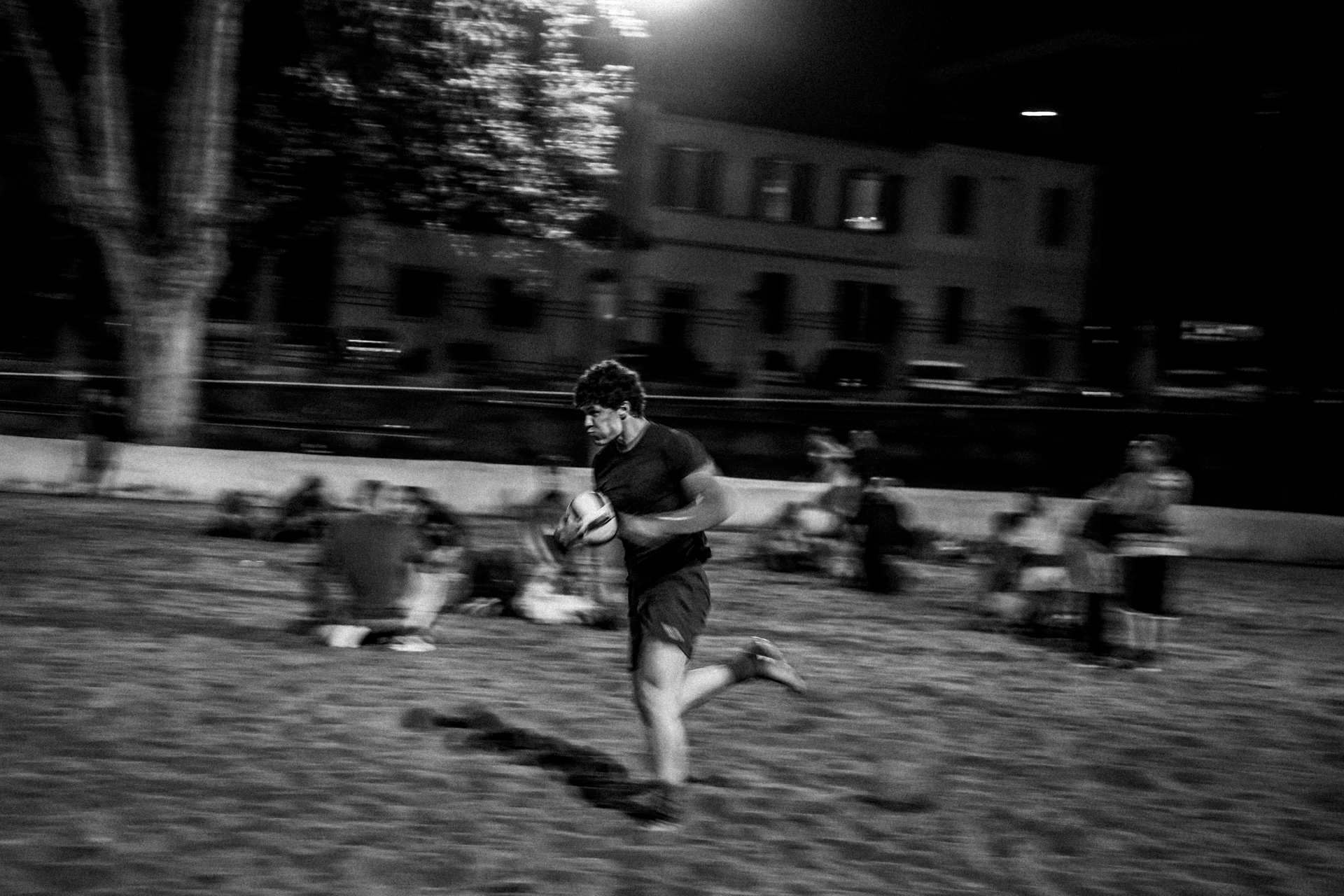
A team member, with the ball in his hands, tries to reach the goal at the end of the pitch.
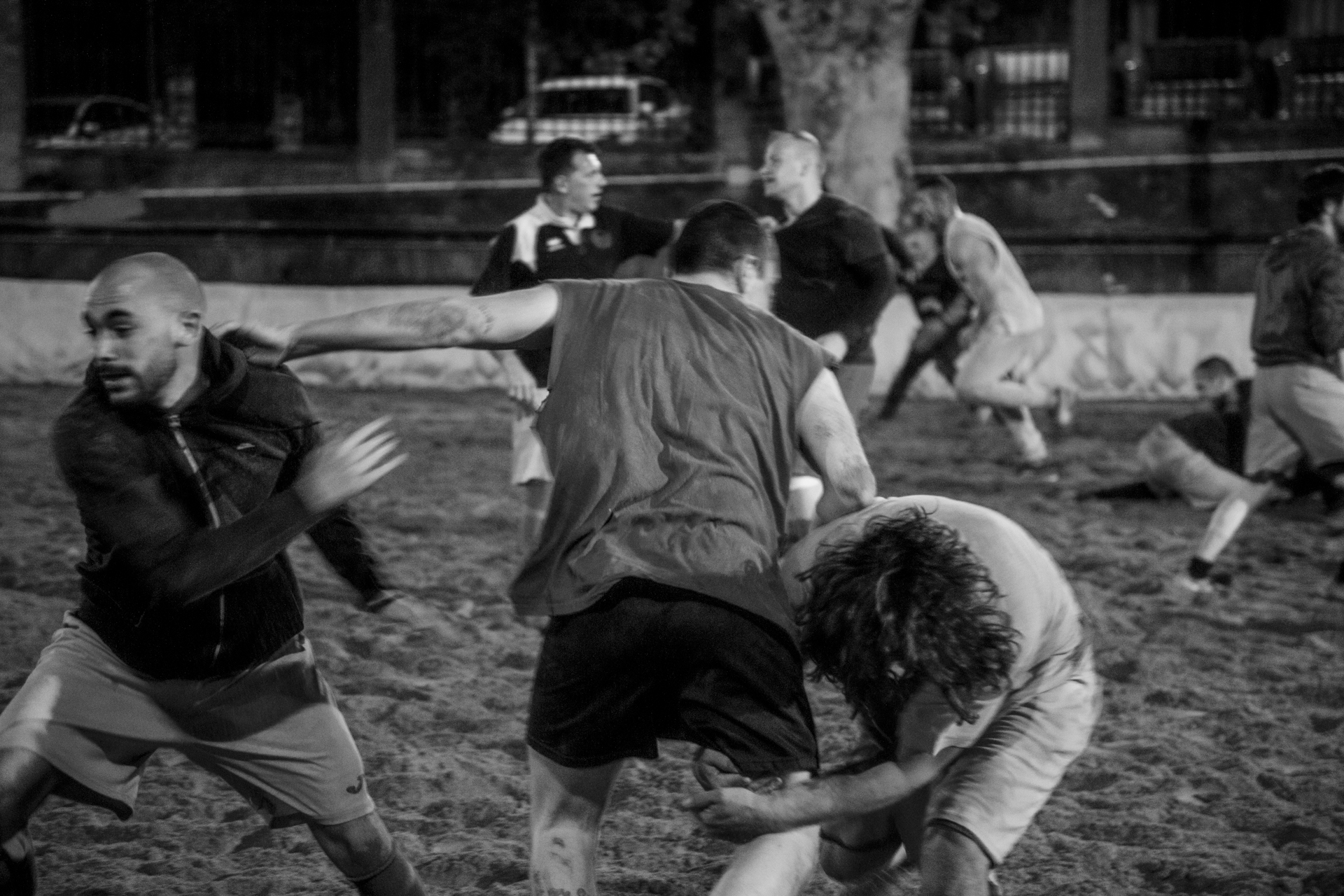
One of the techniques of historical football involves stopping the opponent in every possible way.
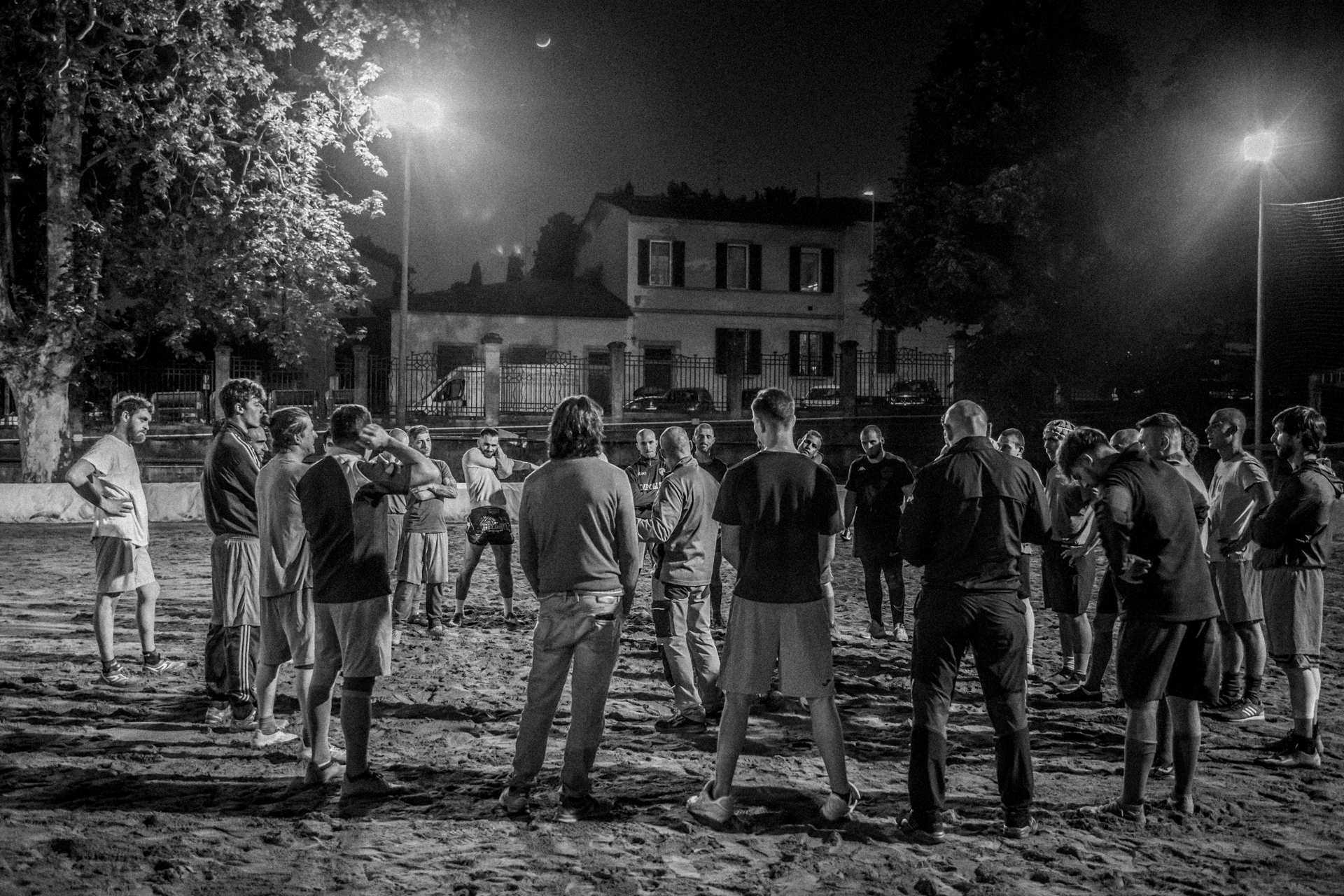
The coach explaining game tactits to the players.
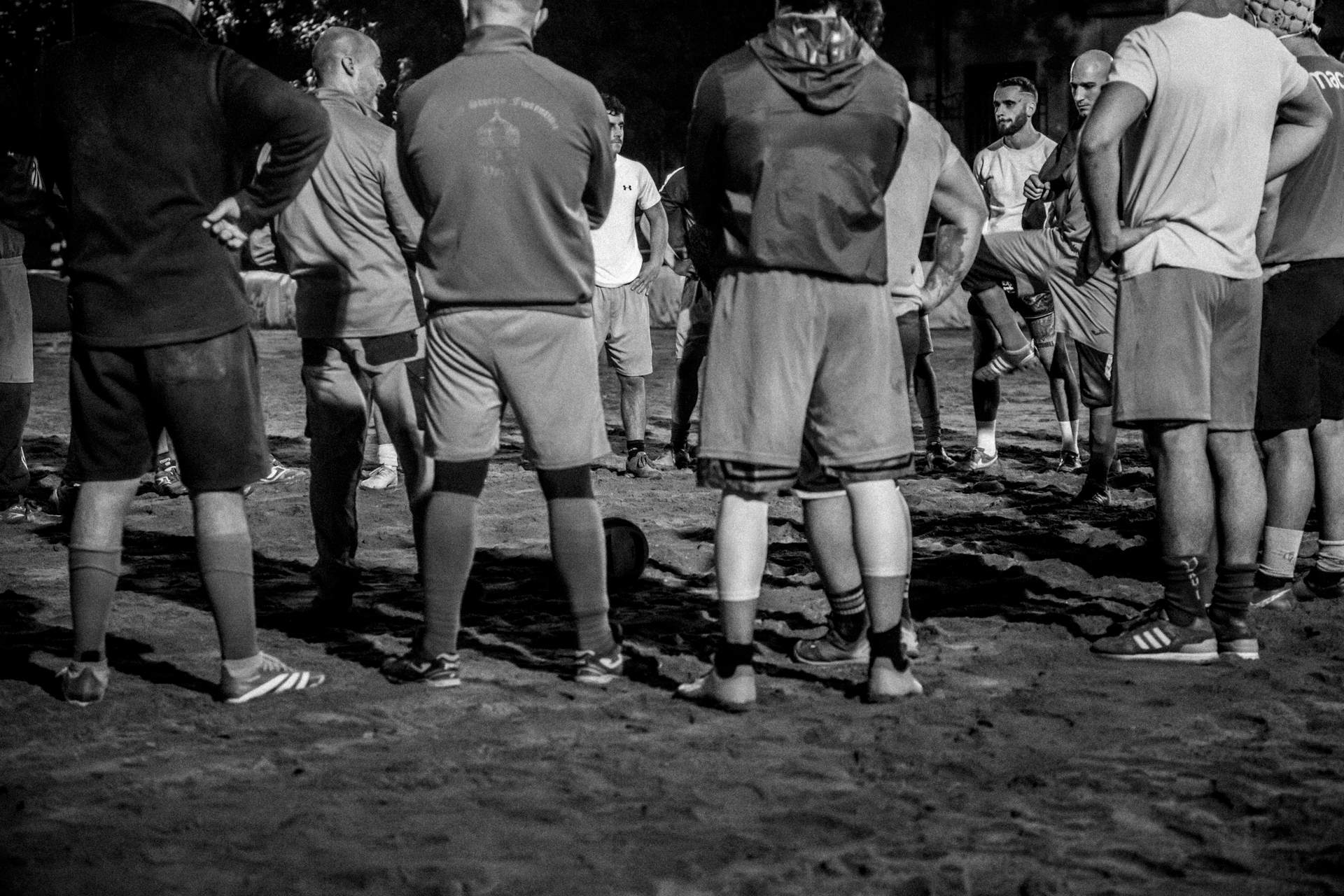
Team players listening to the main coach speech.
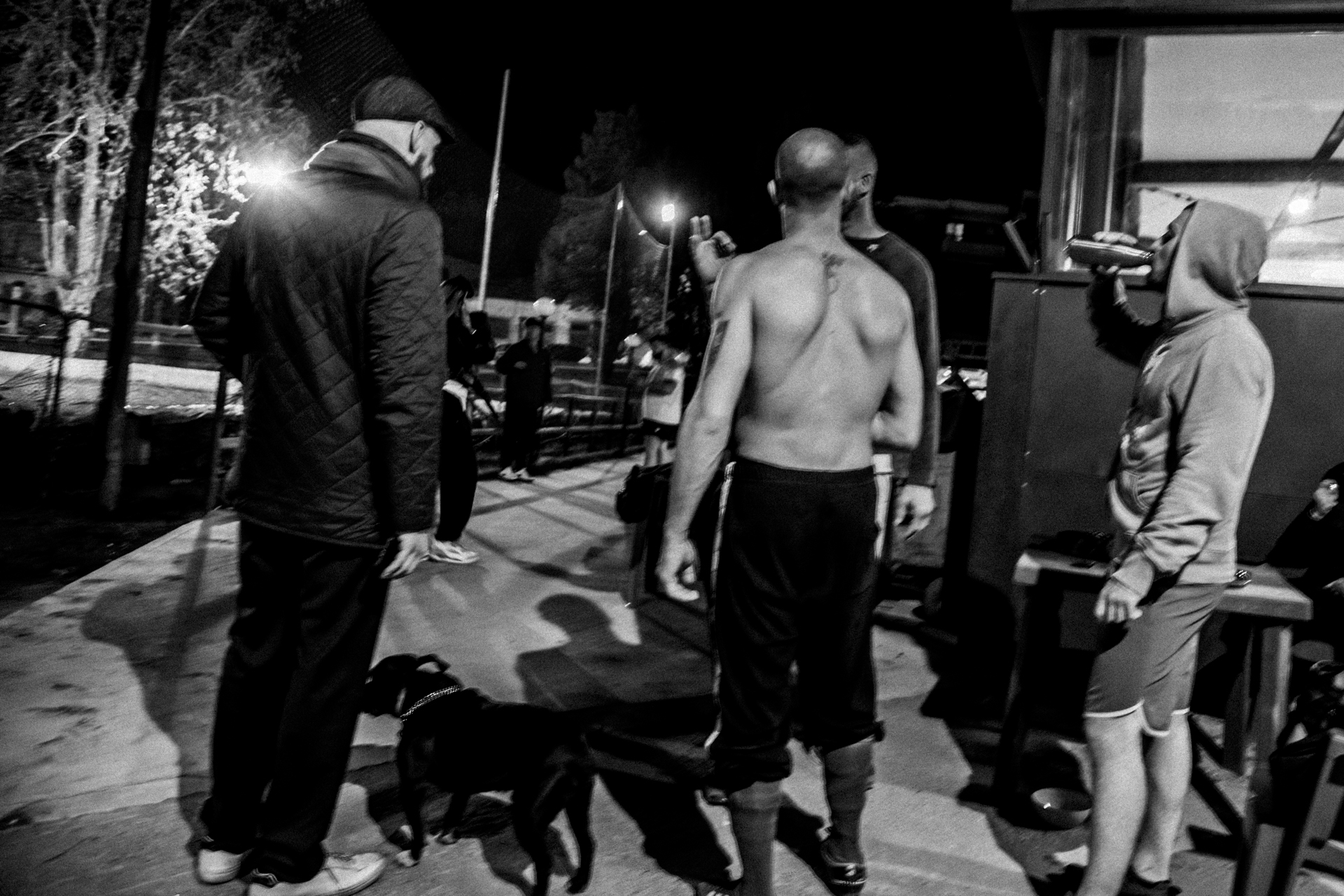
Team members discussing right after the training.
